The Davee Foundation Family Medicine Lecture and Annual Resident Research Day
Join Us
Please join Northwestern University Feinberg School of Medicine's Department of Family and Community Medicine for our Annual Davee Foundation Lecture and Resident Research Day.
We are pleased to announce that our 2025 Davee Lecture and Research Day will take place on Thursday, March 13, 2025. We are excited to invite you to this event, where our graduating family medicine residents from our three residency programs (McGaw Family Medicine Humboldt Park, Lake Forest, and Delnor) will be presenting their scholarly projects.
This resident research day event is an excellent opportunity for our residents to showcase their hard work and dedication to research, and we hope that you will join us to celebrate their achievements. This event will also feature a keynote address from a prominent figure in the field of family medicine, as part of our annual Davee Lecture.
We believe that this event will be an excellent opportunity for networking and knowledge sharing among our faculty, residents, students, and colleagues in the field of family medicine. We invite you to come and support our residents as they present their work, engage in conversation with our keynote speaker, and connect with others in the field.
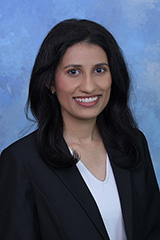
Uroosa Amir, DO
Northwestern McGaw Family Medicine Residency at Humboldt Park
Does Performing Serum IgE Testing for Allergies Improve Patient Outcomes?
Background: About 10 to 30% of the world’s population has an allergic disease. Allergy testing can help with diagnosis and therefore guide treatment. As primary care physicians, we have access to serum allergen testing however little is known about the impact of serum testing on patient outcomes. This review helped to answer this question that was submitted as an HDA on FPIN.
Methods: A literature search was performed using PubMed, PubMed Clinical Queries, Cochrane Library, and ECRI Guidelines Trust.
Results and Conclusions: Serum allergy testing has shown to have improved cost and healthcare utilization when compared to skin allergen testing (SOR B: cohort study). It has also been suggested that measuring a ratio of serum specific IgE to total IgE can be used as a predictor of clinical response to immunotherapy (SOR B: cohort study). The Allergy Immunology Joint Task Force on Practice Parameters recommends use of serum or skin allergy testing to confirm diagnosis of allergic rhinitis (SOR C: Allergy Immunology Joint Task Force on Practice Parameters).
Our review highlights that research is limited in this field, particularly with regards to evaluating specific patient outcomes. More research is needed to be able to recommend or not recommend serum allergy testing to patients.

Ashley Anderson, MD
Northwestern McGaw Family Medicine Residency at Humboldt Park
Improving Health Literacy in Diabetes Management Through An Educational Booklet
Background: Limited health literacy introduces many challenges navigating the healthcare system and can also lead to poor health outcomes. Nearly 9 out of 10 adults in the United States struggle with health literacy (Center for Healthcare Strategies). Limited health literacy disproportionately affects groups of people who are already vulnerable due to socioeconomic, culture, or systemic factors. This project was conducted at Erie Family Health Center, a health center that mostly consists of these vulnerable populations. This project attempted to address the limited health literacy regarding Diabetes Mellitus Type II via creation of an educational booklet in hopes to improve health outcomes via hemoglobin A1C improvements.
Methods: With collaboration from the Health Promotions team at Erie, a Diabetes educational booklet was modified to consolidate key information for Diabetes management in a simplified format to understand and track health information for patients, specifically medications. The Diabetes booklet was available to providers at certain Erie sites. The patients at Erie Humboldt Park and Erie Waukegan who received a Diabetes education booklet were tracked. The percentage of uncontrolled Diabetic patients were also tracked. As a quality improvement project, there were three cycles at Erie Humboldt Park and two cycles at Erie Waukegan. There was also informal provider feedback obtained.

Nithin Charlly, MD
Northwestern McGaw Family Medicine Residency at Lake Forest
Resident and Faculty Perspectives On MyChart Utilization Within Family Medicine
Background: The widespread adoption of patient portals, accelerated by the government’s Meaningful Use criteria and the COVID-19 pandemic, has transformed healthcare communication. However, this shift has led to a significant increase in electronic health record (EHR) in-basket messages, contributing to physician burnout. Primary care physicians, particularly family medicine residents, are disproportionately affected, receiving substantially more patient messages than their surgical counterparts. Understanding family medicine residents’ perspectives on patient portals is essential for developing strategies to mitigate burnout and enhance patient care.
Methods: A cross-sectional survey comprising 25 items was administered to all Northwestern McGaw Family Medicine residents and faculty to assess MyChart utilization. The survey collected quantitative data, summarized using descriptive statistics, and qualitative responses, categorized into themes.
Results and Conclusions: Among 24 respondents, 82.6% reported daily MyChart usage, with 69.6% finding it easy to navigate and 91.3% acknowledging its effectiveness in reviewing and communicating test results. Concerns highlighted included the potential for patient self-diagnosis (65.2%), the creation of a digital divide (65.2%), and increased workload due to the necessity for timely responses (74.5%) and message volume (60.9%). On average, respondents spent approximately 59.6 minutes daily documenting patient encounters using MyChart. Despite these challenges, there was a consensus on MyChart’s positive impact on healthcare efficiency and patient care.
The findings underscore the need to adapt care delivery in response to evolving healthcare technologies. Proposed solutions include establishing patient agreements to set expectations for MyChart use and leveraging artificial intelligence to automate responses, thereby reducing the messaging burden on residents and faculty. Implementing a feedback system could further identify emerging challenges and opportunities for improvement in this rapidly changing landscape.
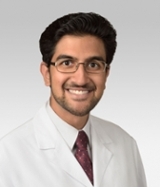
Ameel Chaudhary, MD
Northwestern McGaw Family Medicine Residency at Delnor
Religion and Spirituality: Protective Effects Against Burnout in Illinois Family Medicine Residents
Background: Resident physicians are susceptible to burnout given the large levels of stress they can experience at work. Spirituality and religion (SR) is one domain found to have protective effects against burnout in resident physicians. This study aims to find the mechanism of these effects by surveying family medicine residents about SR, coping strategies, and burnout.
Methods: A cross-sectional survey was conducted through REDCap. Surveys were sent to a total of 64 family medicine residents currently enrolled at three family medicine residencies under Northwestern McGaw (Delnor, Humboldt Park, and Lake Forest). Information gathered in the survey consisted primarily of demographic characteristics, measurements of burnout by utilizing the Maslach Burnout Inventory (MBI), utilization of coping strategies via the brief Coping Orientation to Problems Experienced Inventory (brief-COPE), and an assessment of SR through the Revised Spiritual Involvement and Beliefs Scale (SIBS-R).
Results and Conclusions: n=26 responses were returned to date (41% response rate). Cross-tabulations show differences starting to emerge among residents of different religious affiliations. Residents who identify as Atheist/Agonistic reported more frequent experiences of burnout and emotional exhaustion compared to those who identified as Christian. Full results to be presented at the conference.
Preliminary data show differences in burnout among family medicine residents of different religious and spiritual affiliations. Once the survey closes, we plan to score the MBI, brief-COPE, and SIBS-R to conduct Analysis of Variance (ANOVA) and quantify differences among various subgroups. Findings will help guide curriculum development related to wellness and burnout.
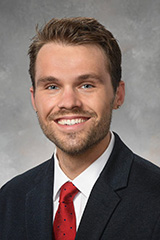
Adam Corya, MD
Northwestern McGaw Family Medicine Residency at Humboldt Park
Help I've Fallen and I Can't Get Up
Background: Falls are the 2nd leading cause of unintentional injury deaths worldwide (behind cars). (1) American and British Geriatric societies recommend screening for fall risk annually. (2) The USPSTF gives a Grade B recommendation for exercise to prevent falls in those at risk. While falls are clearly a great medical concern w low-cost interventions worthy of attention, providers have limited time and many problems to address. This project aims to determine the effect of an intervention (brief presentation) on fall screening rates.
Methods: This project measures the rate of completion of the “Falls Prevention” Epic caregap at Erie Humboldt Park. The percent of closed Falls Prevention caregaps was measured for a 3-month period for patients with a visit from June 1 to September 17, 2024 (n=471).
A 30-minute didactics presentation was provided to Humboldt Park residents on 10/3/2024 on the personal and systems impact of falls on patients >65 years of age and how to close the Epic caregap. Three months after the presentation the percentage of closed caregap was remeasured from September 20 to December 13, 2024. Both sets of data were compared.
Results and Conclusions: 108/471 (22.9%) care gaps were closed pre-presentation, 91/444 (20.4%) were closed post-presentation (p = 0.372).
This project suggests a brief presentation does not affect fall screening rates. Limitations of the study include sample size of providers (a single clinic) and a short period (3 months pre/post intervention) for data collection. Possibly, multiple interventions and/or more intensive techniques such as 1-on-1 feedback/teaching may improve screening rates.

Vinaya Gogineni, MD
Northwestern McGaw Family Medicine Residency at Humboldt Park
Assessing the Impact of Funding Instability on the Future of Community-Based Primary Care Training
Background: Teaching Health Center Graduate Medical Education (THCGME) programs provide valuable training for primary care physicians to provide high quality care for medically underserved communities. Due to the funding structure of these programs, they are constantly under threat of closure. This analysis provides alternative considerations for funding and ensuring that THCGME programs operate with more stability. Direct, permanent, and stable funding as well as an increase in funding per resident are necessities for community-based training to thrive and address issues such as access to primary care physicians and health disparities.

Trevor Gohl, DO
Northwestern McGaw Family Medicine Residency at Delnor
Broader Social Media Impacts on Family Medicine Recruitment and Engagement during the 2022-2023 Match Cycle
Background: Many residency programs continue to use virtual interviewing, and several have started to develop their social media presence as an adjunct. As many social interactions can be lost through video formats, Instagram, Facebook, and other sites are being used to showcase both the professional and personal traits of a program. NRMP Applicant Survey results show, “goodness of fit” was the most important factor to determine program ranking underscoring the need to explore the role of social media to connect with applicants virtually.
Methods: To determine how the use of social media by family medicine residencies impacts the impression and engagement of applicants.
Study-Design: Multi-method study utilizing cross-sectional survey data and social media analytics
Setting: Community-based Family Medicine Residency
Population: Family Medicine residency applicants selected for an interview.
Intervention: Using REDCap, we sent a standardized questionnaire to all interviewed applicants regarding social media use. We also collected analytic data from our program’s Facebook and Instagram profiles to quantify the impact and reach of each post.
Outcome Measures: 39 quantitative survey items included Likert scale, ranked, ranked choice responses, and 2 qualitative items were free text responses. Facebook and Instagram analytic data include “reach” per post and user engagement.
Results and Conclusions: Results: n=26 respondents completed the survey for a response rate of 19%. Respondents indicated Instagram was the most helpful social media platform to evaluate programs (42%, n=11 in agreement). Opinions were split as to whether or not social media played a vital role in recruitment (50%, n=13 in agreement). Similarly, 50% agreed it was a useful addition for learning more about a program. A majority stated resident profiles/hobbies, and Day-in-the-life videos were most helpful (N=18; 73%, and 57% favored, respectively). Full results including social media analytics (reach, number of posts, number of unique and repeat users) will be presented at the meeting.
We anticipated candidates would continue to use social media as a supplemental tool when evaluating programs. Our data showed social media may not be a crucial factor in residency selection, but it likely provides useful information on intangible aspects of a program, such as camaraderie and fit. Lastly, our data show applicants largely preferred profiles and lifestyle-type posts.
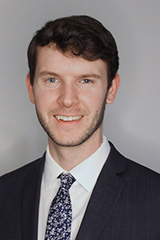
Cooper Hale, MD
Northwestern McGaw Family Medicine Residency at Humboldt Park
Dedicated Panel Management in Residency: Using Telehealth to Improve Patient Outcomes
Background: Telehealth has emerged as an important part of health care in a post COVID era. For patients who do not have regular transportation or the means to leave work or the home, telehealth can improve access to medical care. Familiarity with telehealth is an important skill for residents to learn as part of their training. In addition, continuity of patients and managing a patient panel is an important part of being a primary care physician. By utilizing telehealth to address empanelment patients with uncontrolled medical issues, residents can identify patients who are in need of intervention, manage their chronic conditions, and improve the quality of their preventive health care.
Methods: Each resident was assigned ~1 telehealth day every 1-2 months with half the slots dedicated to patient outreach of panel patients. The other half remained open for urgent care visits. Residents then identified patients in their panel who would benefit from targeted outreach, with a focus on patients with uncontrolled hypertension or type 2 diabetes. There were 5 PDSA cycles where feedback was solicited from residents via survey. A1C and blood pressure were compared before and after outreach to analyze if the efforts had an effect on these medical conditions.
Results and Conclusions: Results are ongoing. We anticipate that having dedicated outreach to patients with uncontrolled medical problems will improve these conditions. We plan to average the change in A1C and blood pressure to see if the net results indicate an improvement. Resident surveys were conducted and suggest that residents overall enjoy the program and appreciate getting to focus on patients in their own panel. There are challenges and limitations to this project, one being that patients were often unable to participate in an unscheduled “cold call” medical visit, resulting in a small sample size of visits.
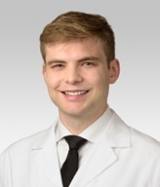
Dillon Karst, MD
Northwestern McGaw Family Medicine Residency at Delnor
A Cross-Sectional Analysis of the Prevalence Of Screening for Primary Hyperaldosteronism in Patients with Resistant Hypertension in a Primary Care Setting.
Background: Primary Hyperaldosteronism (PH) is believed to affect 5-10% of adults; however, recent studies have demonstrated that prevalence could be up to 3-fold higher affecting up to 1 in 5 patients with resistant hypertension. Despite this <1% of people with resistant hypertension are appropriately screened. Studies reveal that screening rates are higher in patients with certain comorbidities, such as in cases of hypokalemia or adrenal masses, but lower in others, such as those with resistant hypertension and obstructive sleep apnea. Our research study seeks to identify the prevalence of resistent hypertension in a family medicine residency clinic in suburban Illinois and how screening for PH via the aldosterone-renin ratio (ARR) affects medical management. We posit that the rate of mineralocorticoid antagonist (MRA) prescription differs based upon appropriately screening for PH.
Methods: We are conducting a retrospective study of adult patients (age ≥18 years) with hypertension seen at the 298 Randall Road primary care clinic at Delnor Hospital. We are identifying patients with a diagnosis of resistant hypertension based on the International Classification of Diseases, Ninth and Tenth Revision (ICD‐9, ICD‐10) codes. We identified candidates for PA screening as patients who met at least one of the criteria for resistant hypertension according to the 2016 Endocrine Society Joint Guidelines and our data points include the aldosterone-renin ratio, potassium levels, diagnosis of OSA, diagnosis of resistant hypertension on 3 or more medicines, and MRA prescription.
Results and Conclusions: Review is currently in progress.

Jane Lee, DO
Northwestern McGaw Family Medicine Residency at Delnor
Impact of Educational Interventions on Family Medicine Residents’ Knowledge and Confidence in Deprescribing
Background: Polypharmacy is associated with increased risk of adverse drug events, increased health care utilization, and increased mortality. It is therefore important for physicians to closely monitor their patients’ medications. There are several tools, guidelines, and criteria available to assist in the identification and elimination of potentially inappropriate medications including the Beer’s list, STOPP/START criteria, ARMOR tool, Medication Appropriateness Index and more. No tool has been proven to be more effective in reducing adverse drug events for patients.
Methods: The objective of this study is to determine whether formal education on polypharmacy, coupled with the provision of validated deprescribing tools, will improve family medicine residents' knowledge of and confidence in deprescribing within the ambulatory setting. Data will be collected through two surveys given to residents part of the Delnor Family Medicine Residency. An initial survey will be available to eligible participants prior to educational interventions; specifically, a lecture on polypharmacy and available deprescribing tools will be given to residents during a didactics session. The validated deprescribing tools will also be made available to the residents to use as reference tools in the clinic for 30 days. After these interventions, a final survey will then be emailed to all eligible participants.
Surveys will overall assess the residents’ knowledge of polypharmacy and on the deprescribing tools currently available for physicians. It will also assess the residents’ level of confidence in monitoring their patients’ active medication lists and deprescribing potentially inappropriate medications. Lastly, surveys will compare the perceived usefulness of validated deprescribing tools.
Results and Conclusions: Results of this study are currently in progress.

Y.C. Liu, DO
Northwestern McGaw Family Medicine Residency at Humboldt Park
Cardio-Metabolic Effects of Nickel: A Narrative Review
Background: Nickel, a transition metal, is ubiquitous in the environment due to both natural processes and anthropogenic activities. While exposure to nickel has been linked to various adverse health outcomes—including genomic damage, allergic reactions, renal disorders, pulmonary fibrosis, carcinomas of the lung and nasal cavities—its cardiovascular toxicity and metabolic implications remain comparatively underexplored. Recently, a series of cross-sectional analyses utilizing data from the National Health and Nutrition Examination Survey (NHANES) have emerged, providing valuable insights into this issue.
Methods: Based on the literature from PubMed, this review aims to narratively summarize clinical observations and database analyses derived from human survey datasets, alongside experimental studies conducted on animal models exposed to varying doses of nickel.
Results and Conclusions: Current literature suggests a potential association between nickel exposure, primarily indicated by urinary nickel levels, and cardiovascular as well as metabolic disease variables; however, findings remain inconclusive, even when using the same databases, particularly at low doses. Experimental research has demonstrated significant toxic effects of high-dose nickel exposure across multiple organs, including the heart and liver, yet low-dose exposure appears to have conflicting impact. Consequently, this review underscores the urgent need for further investigation utilizing both human data and experimental animal models, particularly focusing on low-level nickel exposure, to elucidate the cardiovascular and metabolic consequences of nickel exposure in humans.

Yu "Jayde" Liu, MD
Northwestern McGaw Family Medicine Residency at Delnor
Complementary/Alternative Medicine (CAM) Approaches In The Treatment Of Chronic Diseases
Background: Integrative Medicine (IM) seeks to combine both traditional medicine and complementary/alternative medicine (CAM) approaches in the treatment of chronic diseases. According to a National survey in 2012, 30% of US adults use IM for the management of their chronic conditions1. Primary care providers (PCP) play an integral role in promoting the overall health and wellbeing of the community they serve. As such, PCPs have an important role in guiding patients with selecting CAM modalities that are safest and are the most evidence based. The current medical literature has several published cross-sectional studies done in other countries which look at CAM usage by the general population in countries such as Taiwan, Japan, and Korea2,3,4. However, to date, there are no publications looking at CAM usage in the United States or within the state of Illinois.
Methods: The purpose of this study is to survey the use of CAM modalities by adults living in Illinois in order to gain a better understanding of which CAM modalities are being used and for what medical conditions. To address this question, we will create a internet survey using REDCap. Our survey will be modeled after the I-CAM-Q survey which is a published and peer-reviewed survey tool developed by Quandt et. al 5. Iterations of this survey has been used in several international cross-sectional survey studies assessing CAM use2,3,4.
Results and Conclusions: The results of this survey would help us learn about the CAM use and preference of adult population.
References
- https://www.nccih.nih.gov/health/complementary-alternative-or-integrative-health-whats-in-a-name
- Huang CW, Tran DNH, Li TF, Sasaki Y, Lee JA, Lee MS, Arai I, Motoo Y, Yukawa K, Tsutani K, Ko SG, Hwang SJ, Chen FP. The utilization of complementary and alternative medicine in Taiwan: An internet survey using an adapted version of the international questionnaire (I-CAM-Q). J Chin Med Assoc. 2019 Aug;82(8):665-671. doi: 10.1097/JCMA.0000000000000131. PMID: 31305349.
- Motoo Y, Yukawa K, Arai I, Hisamura K, Tsutani K. Use of Complementary and Alternative Medicine in Japan: A Cross-sectional Internet Survey Using the Japanese Version of the International Complementary and Alternative Medicine Questionnaire. JMA J. 2019 Mar 4;2(1):35-46. doi: 10.31662/jmaj.2018-0044. PMID: 33681511; PMCID: PMC7930716.
- Lee JA, Sasaki Y, Arai I, Go HY, Park S, Yukawa K, Nam YK, Ko SG, Motoo Y, Tsutani K, Lee MS. An assessment of the use of complementary and alternative medicine by Korean people using an adapted version of the standardized international questionnaire (I-CAM-QK): a cross-sectional study of an internet survey. BMC Complement Altern Med. 2018 Aug 13;18(1):238. doi: 10.1186/s12906-018-2294-6. PMID: 30103722; PMCID: PMC6090824.
- Quandt SA, Verhoef MJ, Arcury TA, Lewith GT, Steinsbekk A, Kristoffersen AE, Wahner-Roedler DL, Fønnebø V. Development of an international questionnaire to measure use of complementary and alternative medicine (I-CAM-Q). J Altern Complement Med. 2009 Apr;15(4):331-9. doi: 10.1089/acm.2008.0521. PMID: 19388855; PMCID: PMC3189003.

Ryan Mak, MD
Northwestern McGaw Family Medicine Residency at Humboldt Park
A New Musculoskeletal Longitudinal Curriculum at an Urban FQHC-Based Residency Program
Background: Musculoskeletal concerns make up 40% of primary care outpatient visits. The Accreditation Council for Graduate Medical Education (ACGME) has outlined family medicine program requirements for musculoskeletal medicine and sports medicine training, but studies have shown that family medicine residency graduates often do not feel adequately trained to manage the common musculoskeletal conditions. In a CERA study by Wu et al. published in 2022, two hundred eighty-seven program directors were surveyed with a majority not feeling that PGY-1 residents who entered residency had the adequate physical exam skills needed to evaluate common musculoskeletal conditions.
Methods: 14 family medicine residents were given a baseline survey to assess musculoskeletal clinical knowledge. Residents were led through a year-long longitudinal didactic curriculum incorporating lectures, physical exam workshops, simulation centers, and board review questions. The same 14 residents were given a follow-up survey with similar questions to assess their improvement in musculoskeletal knowledge. The wilcoxon signed rank test was used to detect improvement in liker scale items before and after the intervention.
Results and Conclusions: There were significant differences in resident confidence conducting a precise musculoskeletal medical history and perform physical exam skills needs to evaluate common musculoskeletal and sports medicine conditions. Other items such as resident confidence in recommending initial treatment for common musculoskeletal conditions and showed improvement but did not meet the threshold for statistical significance.
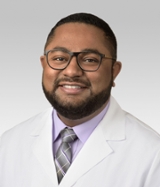
Vipin Mathew, DO
Northwestern McGaw Family Medicine Residency at Delnor
Utilization of Patient with Suspected or Diagnosed OSA Among Family Medicine Residents at Northwestern McGaw Family Medicine Residency at Delnor.
Background: Sleep disorders are highly prevalent in the general population today, and associated with significant morbidity, mortality, and diminished quality of life. Despite this demand and desperate need of prompt initial workup, lack of access, and treatment/management for patient population in PCP clinics, most cases related to sleep disorders in the residency clinic are still referred out to specialists for initial evaluation and management. The average initial wait time for referral to initial clinic visit in the US varies between 2 weeks to 3 months depending on the area, and the average time from clinic visit to Polysomnogram is 2 to 3 weeks. Currently, at the FM residency clinic at Delnor, when it comes to management of OSA, most residents have historically referred their patients to Sleep Medicine specialists, and the likely contributing factor to this is the lack of education and exposure of FM residents with sleep disorder treatment and management with PAP therapy.
Methods: Phase 1 of my study was conducted with the goal to measure confidence among FM residents at NM Delnor Campus with regards to OSA diagnosis, workup, and management with a RedCap survey using a Likert scale. The survey was taken three times, the 1st one prior to the education/lectures and hands-on PAP training, 2nd one after 1 week of the education, and a 3rd one is planned for 3 months after the educational intervention to assess if the resident confidence at managing Sleep Apnea has changed. Phase 2 of my study is with the goal to measure referral pattern changes at our clinic via an EDW data before and after the intervention.
Results and Conclusions: Still in process, but the preliminary data has showed that is that resident confidence to diagnose and manage OSA within their own patient panel and practice such as the initial ordering of sleep test, ordering of PAP therapy, DME orders placement and initial follow-ups has improved with education and hands-on PAP training and reduce the need to refer out to specialty unless medically necessary.
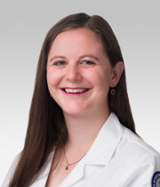
Kelsey McAfee, MD
Northwestern McGaw Family Medicine Residency at Lake Forest
Implementing an Advocacy Curriculum in Family Medicine Residency
Background: The 2022 ACGME competencies for family medicine training require residents to demonstrate basic skills in advocating for patients in the healthcare system. As this is a relatively new requirement, strategies for training in advocacy are still emerging. This project aims to create a curriculum to improve residents’ advocacy skills. The sessions focus on hands-on activities and addressing current legislative proposals on the local and federal level to increase residents’ confidence in various advocacy techniques.
Methods: All Northwestern Lake Forest Family Medicine residents completed a survey at the first advocacy session of the academic year assessing their current knowledge, confidence, and barriers regarding advocacy. A curriculum was designed around closing those gaps using input from residents as well as resources from the Society of Teachers of Family Medicine and Illinois Academy of Family Physicians. The curriculum focuses on skills-based sessions and provides time to participate in advocacy. Topics in the curriculum include advocacy basics, letter writing, public narrative, elevator pitch, and election advocacy. A post-survey was completed after the last advocacy session of the academic year to assess the efficacy of the curriculum and identify areas for improvement.
Results and Conclusions: 35 residents responded to the pre-survey across 2 years and 18 residents responded to the post-survey in one year. Preliminary results suggest increased confidence in advocacy skills after participating in the curriculum. Full analysis in progress.
Implementing an advocacy curriculum improves resident confidence in navigating advocacy resources and advocating on a local and governmental level.
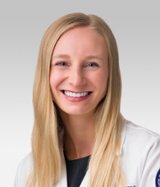
Francesca Meade, MD
Northwestern McGaw Family Medicine Residency at Lake Forest
The Effects of Physical Fatigue on King-Devick Test Performance
Background: The King Devick (KD) test uses rapid number naming to quickly assess concussion status in athletes on the sidelines. Previous studies show that the KD test is sensitive to effects of sleep deprivation. It is possible that other factors, like environment, physical fatigue and cognitive function could impact the efficacy of the KD test on the sidelines of athletic events. Thus far, studies have examined exercise-induced fatigue in controlled settings with conflicting results.
Methods:
Objective: Determine the effect of physical fatigue on KD test performance through authentic workouts
Design: Prospective Cohort Study
Setting: Physical fatigue was induced through a single challenging practice session. Wrestlers participated in a two-hour practice and runners performed four to twelve 800-meter timed intervals
Patients or Other Participants: Seven NCAA Division-I wrestling athletes participating in regular practice and eighteen recreational runners performing weekly workouts
Main Outcome Measures: Time to completion and number of errors on the KD test
Results and Conclusions: Time to completion decreased by a mean of 3.72s [95% CI 2.17-5.26, p= 0.00008] in the fatigued state compared to resting state. The number of subjects committing at least one error was not different between the fatigued state and resting state (p=0.22).
This study demonstrates that the validity of the KD test is not affected by physical fatigue induced by a challenging training session. The KD test is not overly sensitive to the effects of fatigue in this setting and is unlikely to be affected by sports participation when used as a sideline concussion test.
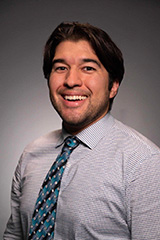
Amaury Michel, MD
Northwestern McGaw Family Medicine Residency at Humboldt Park
Help I've Fallen and I Can't Get Up
Background: Falls are the 2nd leading cause of unintentional injury deaths worldwide (behind cars). (1) American and British Geriatric societies recommend screening for fall risk annually. (2) The USPSTF gives a Grade B recommendation for exercise to prevent falls in those at risk. While falls are clearly a great medical concern w low-cost interventions worthy of attention, providers have limited time and many problems to address. This project aims to determine the effect of an intervention (brief presentation) on fall screening rates.
Methods: This project measures the rate of completion of the “Falls Prevention” Epic caregap at Erie Humboldt Park. The percent of closed Falls Prevention caregaps was measured for a 3-month period for patients with a visit from June 1 to September 17, 2024 (n=471).
A 30-minute didactics presentation was provided to Humboldt Park residents on 10/3/2024 on the personal and systems impact of falls on patients >65 years of age and how to close the Epic caregap. Three months after the presentation the percentage of closed caregap was remeasured from September 20 to December 13, 2024. Both sets of data were compared.
Results and Conclusions: 108/471 (22.9%) care gaps were closed pre-presentation, 91/444 (20.4%) were closed post-presentation (p = 0.372).
This project suggests a brief presentation does not affect fall screening rates. Limitations of the study include sample size of providers (a single clinic) and a short period (3 months pre/post intervention) for data collection. Possibly, multiple interventions and/or more intensive techniques such as 1-on-1 feedback/teaching may improve screening rates.
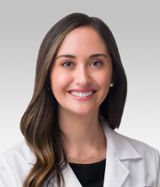
Bryanna Paunovich, MD
Northwestern McGaw Family Medicine Residency at Lake Forest
Residents Teaching Residents: Optimizing Inpatient Teaching Curriculum in a Community Hospital
Background: The inpatient medicine rotation is a core rotation within any family medicine residency. The busy, unpredictable nature of the inpatient day poses a challenge to implementing consistent, intentional teaching across different inpatient resident teams. This results in conflicting levels of satisfaction with the inpatient teaching experience. Furthermore, while many residents come into residency with some medical teaching experience, not all senior residents have the background or skills in consolidating information into effective teaching sessions. The goal of our study is to optimize the existing inpatient teaching curriculum (ITC) to streamline and standardize the content while preserving opportunities for residents to explore different teaching styles and modalities.
Methods: We created a standard powerpoint template that was used to create short, effective, and standardized teaching topics. Resident team seniors were encouraged to utilize the powerpoints to deliver teaching topics to their teams while they were on their inpatient rotation. A survey was created and delivered to all current residents to gauge their satisfaction with their inpatient teaching experience before and after the implementation of the new ITC.
Results and Conclusions: The new ITC increased senior residents’ preparedness for delivering structured teaching sessions and enhanced overall learning for all residents including the prioritization of high yield topics. There remains important differences between the perception of teaching effectiveness amongst the different levels of residents on the team. By continuing to emphasize the importance of structured teaching on the inpatient teaching team, we expect gradual improvements to resident learning experiences in subsequent iterations of the ITC.
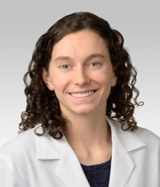
Maureen Penn, MD
Northwestern McGaw Family Medicine Residency at Delnor
Implementation of a Nursing Refill Protocol within a Family Medicine Residency Clinic and the Impact on Physician Inbasket Management Times
Background: As EHR systems have come to be the primary mode of medical record keeping and patient communication in primary care offices, inbox management has become an increasingly significant part of the primary care physician’s workday. Refilling prescriptions is a commonly required task, and delayed responses can lead to breaks in treatment, adverse patient events, and patient dissatisfaction. This is especially pertinent to residency clinics, as residents spend much of their time on rotations away from the clinic. Inbox management, including addressing refills, has also been shown to increase physician stress and burnout rates, as well as decrease job satisfaction. The purpose of this study is to determine whether the implementation of a nursing prescription refill protocol at Northwestern Delnor Family Medicine Residency Clinic leads to a reduction in refill requests received by physicians, time spent addressing refill requests, and refill turnaround time.
Methods: The nursing refill protocol at Northwestern Delnor Family Medicine Residency Clinic was implemented in November 2023. Using data obtained from the Signal Data tool within EPIC for three different measures (Inbox Messages - Rx Response - Received Per Day, Time in Inbox -Rx Response - Per Day, Turnaround Time - Rx Response), we will compare the three months before protocol implementation to the three months after implementation for these measures. Both resident and faculty data will be used in analysis.
Results and Conclusions: Data analysis is ongoing.
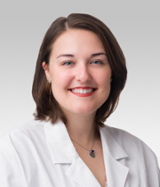
Cassandra Smith, DO, TIPS Fellow
Northwestern McGaw Family Medicine Residency at Lake Forest
State Noncompliance in Provision of Abortion Care Under Medicaid
Background: The Hyde Amendment restricts federal funding for abortion services under Medicaid, permitting coverage only in cases of rape, incest, or when a pregnancy endangers a woman's life. However, as of July 2024, fourteen states have enacted total abortion bans that do not comply with these federally permitted exceptions, significantly limiting access to abortion care for Medicaid recipients. This project examines the implications of these state-level restrictions and proposes solutions for enforcing compliance with federal Medicaid requirements.
Methods: A policy analysis was conducted to assess the extent of state noncompliance with the Hyde Amendment, incorporating demographic data, healthcare access trends, and public health implications. Legal and economic considerations were evaluated to determine the scope and impact of restricted abortion access on Medicaid beneficiaries. Finally, a proposal for ensuring state compliance of Hyde Amendment exceptions is offered.
Results and Conclusions: Findings reveal state-imposed abortion bans disproportionately affect marginalized populations, particularly low-income individuals and racial minorities, exacerbating existing healthcare inequities. States with noncompliant policies exhibit higher maternal mortality rates, increased economic and travel burdens for abortion care, and declining provider availability with reduced availability of obstetric services even for those not seeking termination.
To address these disparities, federal oversight and enforcement of Hyde Amendment exceptions are necessary. Recommendations include implementing state audits, enhancing provider education, and ensuring compliance through financial incentives and penalties. Additionally, expanding telemedicine and legal support could improve access to permissible abortion care. Strengthening enforcement mechanisms would mitigate health risks and uphold federally permitted abortion access for Medicaid recipients.
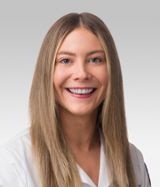
Jacqueline Story-Remer, MD
Northwestern McGaw Family Medicine Residency at Lake Forest
Assessing OB/Gyn Physician Experiences with Medication Assisted Pregnancy Termination Referrals to Grayslake Family Medicine Clinic
Background: Safe medication abortion is a critical part of reproductive health care and equity. However, access to these services is increasingly limited, and even providers are restricted to where they can refer patients for safe and timely care. Grayslake Family Medicine clinic has begun providing medication assisted pregnancy terminations to patients over the last few years, and we hope to assess OB/Gyn provider experiences referring for these services. We hope to gain feedback regarding the current referral process and protocols for medication abortion & miscarriage management at Grayslake.
Methods: A survey will be distributed to outpatient Ob/Gyn providers at Northwestern Lake Forest Hospital, who serve as the primary source of referrals for medication abortion services to Grayslake Family Medicine. Data will be collected regarding current referral trends in Lake County and the level of satisfaction with various aspects of the current referral process to Grayslake.
Results and Conclusions: Likert score trends will help evaluate provider satisfaction with medication abortion referrals and serve to identify the aspects of our current protocols that exist as barriers to optimal care. We hope to use this data to improve the referral protocols for MAPT services provided by LFH FM Residency at Grayslake and to strengthen the partnership with OB providers in order to provide comprehensive reproductive services to our patients.
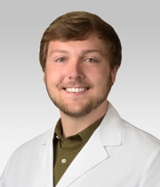
Trever Troutman, MD
Northwestern McGaw Family Medicine Residency at Delnor
Implementation of a Nursing Refill Protocol within a Family Medicine Residency Clinic and the Impact on Physician Inbasket Management Times
Background: As EHR systems have come to be the primary mode of medical record keeping and patient communication in primary care offices, inbox management has become an increasingly significant part of the primary care physician’s workday. Refilling prescriptions is a commonly required task, and delayed responses can lead to breaks in treatment, adverse patient events, and patient dissatisfaction. This is especially pertinent to residency clinics, as residents spend much of their time on rotations away from the clinic. Inbox management, including addressing refills, has also been shown to increase physician stress and burnout rates, as well as decrease job satisfaction. The purpose of this study is to determine whether the implementation of a nursing prescription refill protocol at Northwestern Delnor Family Medicine Residency Clinic leads to a reduction in refill requests received by physicians, time spent addressing refill requests, and refill turnaround time.
Methods: The nursing refill protocol at Northwestern Delnor Family Medicine Residency Clinic was implemented in November 2023. Using data obtained from the Signal Data tool within EPIC for three different measures (Inbox Messages - Rx Response - Received Per Day, Time in Inbox -Rx Response - Per Day, Turnaround Time - Rx Response), we will compare the three months before protocol implementation to the three months after implementation for these measures. Both resident and faculty data will be used in analysis.
Results and Conclusions: Data analysis is ongoing.
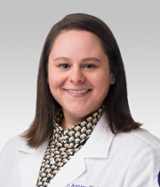
Ashley Watson, MD, MPH
Northwestern McGaw Family Medicine Residency at Lake Forest
Improving Adult Immunization Rates Among African American Patients
Background: In August 2020, the CDC awarded the AAFP a cooperative agreement aimed at boosting adult immunization rates among minority populations. The AAFP launched “Improving Adult Immunization Rates Among Racial and Ethnic Minority Populations” to develop effective strategies, tools, and resources to increase rates. The AAFP invited 22 family medicine practices to participate, including our Northwestern Grayslake Family Medicine Clinic.
Methods: The project utilized the Plan-Do-Study-Act model, with each clinic selecting their own Quality Improvement (QI) strategies. Our QI efforts involved both educational (vaccine counseling, motivational interviewing) and clinical components (changes to MA, resident, and preceptor workflows). We first evaluated administration rates for Influenza, COVID-19, Tdap, HPV, Zoster, and PCV in 20 randomly selected African American patients. After implementation, we collected a second round of data. Further initiatives were then introduced, followed by a third round of data collection.
Results and Conclusions: Overall, vaccination rates increased from the first to third measurement. The initial Tdap rate was 80% and the second COVID-19 rate was nearly 80%, both sufficiently high to not warrant further measurements. Two of the four other vaccines met our clinic-set goals: PCV goal 70%/administration 100%; Zoster goal 60%/administration 83%. The other two did not meet their goals: Influenza goal 65%/administration 60%; HPV goal 65%/administration 30%.
Our data demonstrated an improvement in vaccine administration following the implementation of QI initiatives. Looking ahead, we have established an annual Addressing Vaccine Hesitancy Day before flu season to review our rates and educational curriculum.
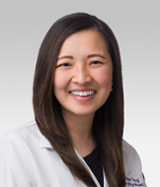
KaHoua Yang, MD
Northwestern McGaw Family Medicine Residency at Lake Forest
Project 1:
Residents Teaching Residents: Optimizing Inpatient Teaching Curriculum in a Community Hospital
Background: The inpatient medicine rotation is a core rotation within any family medicine residency. The busy, unpredictable nature of the inpatient day poses a challenge to implementing consistent, intentional teaching across different inpatient resident teams. This results in conflicting levels of satisfaction with the inpatient teaching experience. Furthermore, while many residents come into residency with some medical teaching experience, not all senior residents have the background or skills in consolidating information into effective teaching sessions. The goal of our study is to optimize the existing inpatient teaching curriculum (ITC) to streamline and standardize the content while preserving opportunities for residents to explore different teaching styles and modalities.
Methods: We created a standard powerpoint template that was used to create short, effective, and standardized teaching topics. Resident team seniors were encouraged to utilize the powerpoints to deliver teaching topics to their teams while they were on their inpatient rotation. A survey was created and delivered to all current residents to gauge their satisfaction with their inpatient teaching experience before and after the implementation of the new ITC.
Results and Conclusions: The new ITC increased senior residents’ preparedness for delivering structured teaching sessions and enhanced overall learning for all residents including the prioritization of high yield topics. There remains important differences between the perception of teaching effectiveness amongst the different levels of residents on the team. By continuing to emphasize the importance of structured teaching on the inpatient teaching team, we expect gradual improvements to resident learning experiences in subsequent iterations of the ITC.
Project 2:
Implementing an Advocacy Curriculum in Family Medicine Residency
Background: The 2022 ACGME competencies for family medicine training require residents to demonstrate basic skills in advocating for patients in the healthcare system. As this is a relatively new requirement, strategies for training in advocacy are still emerging. This project aims to create a curriculum to improve residents’ advocacy skills. The sessions focus on hands-on activities and addressing current legislative proposals on the local and federal level to increase residents’ confidence in various advocacy techniques.
Methods: All Northwestern Lake Forest Family Medicine residents completed a survey at the first advocacy session of the academic year assessing their current knowledge, confidence, and barriers regarding advocacy. A curriculum was designed around closing those gaps using input from residents as well as resources from the Society of Teachers of Family Medicine and Illinois Academy of Family Physicians. The curriculum focuses on skills-based sessions and provides time to participate in advocacy. Topics in the curriculum include advocacy basics, letter writing, public narrative, elevator pitch, and election advocacy. A post-survey was completed after the last advocacy session of the academic year to assess the efficacy of the curriculum and identify areas for improvement.
Results and Conclusions: 35 residents responded to the pre-survey across 2 years and 18 residents responded to the post-survey in one year. Preliminary results suggest increased confidence in advocacy skills after participating in the curriculum. Full analysis in progress.
Implementing an advocacy curriculum improves resident confidence in navigating advocacy resources and advocating on a local and governmental level.

Ahmad Abdl-Haleem, DO
Northwestern McGaw Family Medicine Residency at Humboldt Park
Does providing opiate maintenance therapy during incarceration increase participation in community treatment programs after release?
Objective: A question was posed on the Family Practice Inquiry Network "Does providing opiate maintenance therapy during incarceration increase participation in community treatment programs after release?"
Methods: A literature search was performed using the research support of Northwestern Galter Library staff.
Results: A 2017 meta-analysis of 8 RCTs, 5 secondary-analyses of RCTs, and 11 quasi-experimental studies evaluated the efficacy of MAT within prisons on patient oriented outcomes, specifically focusing on whether opiate maintenance therapy during incarceration increased participation in community treatment programs after release. Through this meta-analysis, it was demonstrated that incarcerated individuals treated with methadone were significantly more likely to participate in community treatment compared to those without treatment (4 trials, n=407. [OR] = 9.0; 95% CI = 2.5 – 31, Q = 6.3, I 2 = 68%).
Conclusions: Opiate MAT during incarceration does increase participation in community substance use treatment programs following release (SOR: A, meta-analysis of RCTs and quasi-RCTs).

Bushra Anis, MD
Northwestern McGaw Family Medicine Residency at Humboldt Park
The prevalence and risk factors for perinatal depression in the South Asian community in the West
Background: In the United States, it is estimated that 13-19% of women experience perinatal depression. While the South Asian immigrant population continues to grow in the Western World, little is known about the experiences of perinatal mental health and its risk factors in this population.
Methods: We performed a systematic search of articles examining mental health outcomes of South Asians living in the West published after 2000. South Asia was defined as India, Pakistan, Bangladesh, Bhutan, Sri Lanka, and Nepal. The West was defined as the US, Canada, Australia, and Western Europe. Our search strategy had 3 main parts: 1. database search 2. manual article screen and 3. topic based article selection. First, we performed a database search. Next, identified articles were screened by two independent reviewers to confirm inclusion. Discrepancies were decided by a third independent reviewer. Finally, articles were further subdivided according to major topic areas with this review focusing on women’s reproductive mental health.
Results: Our search identified 6 papers on perinatal mental health in the South Asian community living in Western Diaspora. Reported prevalence’s were between 11-28%, and risk factors included previous depression, social isolation, and socio-economic status.
Conclusion: The prevalence and risk factors of perinatal mental illness in the South Asian community are similar that in the United States (Hutchens et al, 2020). Our review highlights that this population is understudied and further research must be done to provide culturally competent care.

Autumn Bernicky, DO
Northwestern McGaw Family Medicine Residency at Delnor
Investigation of the effects of a patient outreach program after first time ischemic stroke or TIA on stroke recurrence and readmission rates at Northwestern Medicine Delnor Hospital
Autumn Bernicky, DO
PGY 3 Resident, Northwestern McGaw Family Medicine at Delnor Hospital
Background:
Stroke remains one of the leading causes of death in the US and worldwide, and survivors are at an increased risk of recurrent stroke and other cardiovascular events. There is also high risk of readmission after a stroke, contributing to further morbidity, mortality, and cost. Studies have shown that strict control of risk factors, such as blood pressure, dyslipidemia, and diabetes decreases the risk of stroke recurrence, and a combination approach could decrease relative risk of recurrent vascular events by 80%. However, control of multiple variables is inherently complex and therefore difficult to maintain. Here, we propose that introduction of a post-hospitalization outreach program for survivors of acute ischemic stroke will improve control of modifiable risk factors and therefore decrease stroke recurrence and readmission rates.
Methods:
Northwestern Medicine Delnor Hospital implemented an Ambulatory Care Coordination (ACC) Program in 2021 for survivors of ischemic stroke determined to be at high risk of recurrence. In order to be accepted into the program, patients had to have a Northwestern Medicine Primary Care Provider, be discharged home, and meet one of the following “high-risk” criteria: multiple co-morbidities, history of non-adherence, need for further diabetic follow-up, behavioral health needs, transportation difficulty, community resource needs, poly-pharmacy, or concern for family dynamics/inadequate social support.
We collected data on patients referred to the ACC Program as well as historical controls to evaluate the following outcomes: 1) Readmission rates and Emergency Department visits at 1 month, 6 months, and 1 year after discharge. 2) Prescription of antihypertensive, statin, and antithrombotic/anticoagulant medication (if indicated) at 3, 6, 9, and 12 months post-discharge. 3) Control of modifiable risk factors (Systolic blood pressure <130, diastolic blood pressure <80, LDL <70, HgA1c <7.0) at 3, 6, 9, and 12 months post-discharge.
Results and Conclusions:
In progress

Sreevidya Bodepudi, DO
Northwestern McGaw Family Medicine Residency at Lake Forest
Easy as 1, 2, 3: Implementing an Advocacy Curriculum in a Family Medicine Residency Program
Sreevidya Bodepudi, DO / Danika Johnson, MD PGY 3 Residents, Northwestern McGaw Family Medicine at Lake Forest
Background:
The ACGME has now formally recognized the role that family physicians take on as advocates. The 2022 ACGME competencies for family medicine training include that residents demonstrate basic skills in advocating for patients in the healthcare system, for ensuring quality patient care, and for identifying system errors and solutions. This project proposes to create a curriculum that supports residents to develop the skills to be successful advocates.
Methods:
Residents will complete a pre-assessment identifying the current knowledge and skills gaps regarding system-level advocacy. Using this data, a curriculum will be refined to address the identified needs. This curriculum will feature lectures and skill-based sessions. The initial lectures will review the definition, purpose, and skills to advocate at different system levels. The final sessions will emphasize practical skills including to recognize a topic to advocate for, identify stakeholders, choose the appropriate mechanism, and communicate their message. A post-survey will assess the efficacy of the educational intervention and identify areas for future improvement. We will use combination of paired t-test and chi-squared analysis to compare pre- and post- survey results.
Conclusion:
We hypothesize that a formalized advocacy curriculum will improve residents’ understanding of basic advocacy skills and confidence in their ability to utilize these skills. We hope helping residents realize that this work is actionable, sustainable, and rewarding, they will be more empowered applying these skills as attendings.

Clare Brady, MD
Northwestern McGaw Family Medicine Residency at Lake Forest
Impact of a Gender Affirmation Curriculum on Resident Confidence and Medical Knowledge
Background: Residency training provides an opportunity for new physicians to practice the art of medicine in a variety of capacities. The goals of training are often dictated by the patient population in which the residency functions, and sometimes new needs arise, especially amongst the most vulnerable populations. One area of medicine that both medical schools and residency programs lack exposure and training in is gender affirmation. According to a curriculum inventory by the American Association of Medical Colleges less than 65% of curricula offer some level of transgender-related education, and less than 80% of those programs do so in required courses. Roughly 0.4-0.6% of the US population identifies as transgender, which is equivalent to the amount of type I diabetics, and yet many physicians do not feel comfortable with initiating and monitoring gender affirming care. Northwestern Medicine offers a Gender Pathways program with many resources available in the central region, however growing demand in the Grayslake clinic and north region underscored a need to supplement our current residency training.
Methods: This was a cross-sectional study conducted over the course of the 2021-2022 academic year. Participants consisted of current residents at the Northwestern McGaw Lake Forest Family Medicine program. Surveys were administered before and after the implementation of a structured gender affirmation curriculum consisting of two interactive, virtual lectures. The main outcome measure was confidence in providing gender affirming care, and secondary outcomes looked at changes in medical knowledge regarding this important aspect of patient care. Confidence was measured using a likert scale with 1 being “very uncomfortable” and 5 being “very comfortable” and medical knowledge was based on responses to multiple choice and true/false questions in pre/post implementation surveys.
Results: A total 13 residents completed the pre-curriculum survey and 11 completed the post-survey. Paired t-tests were used to analyze self-reported confidence for providing gender affirming care as well as for differences in knowledge base. All residents showed an increase in confidence for providing gender affirming care, with no resident rating confidence less than a 3 on the above mentioned scale. Difference in confidence was statistically significant even with the small sample size. Despite increased confidence in providing care, there was not a concordant increase in correct responses to knowledge based questions.
Conclusion: The implementation of a formal, structured gender affirmation curriculum at an academically-affiliated community-based Family Medicine residency program resulted in an increase in confidence for providing gender affirming care, however did not result in a corresponding increase in medical knowledge based on the selected questions. Improvements to the curriculum and to strengthen its analysis would include additional didactic sessions to solidify the knowledge base of gender affirming care, use of case studies to put new knowledge to use in clinically applicable scenarios, in person didactic sessions instead of virtual lectures, and staggered cohorts for curriculum implementation throughout the year to provide continuity of learning for residents as well as improve the overall sample size.

Mahreen Bux, DO
Northwestern McGaw Family Medicine Residency at Delnor
Team Based Care in a Primary Care Setting
Mahreen Bux, DO
PGY 3 Resident, Northwestern McGaw Family Medicine at Delnor Hospital
Background: Team based care contributes to reduced physician burnout and increases patient access to physicians in a nation where over 100 million individuals do not have a primary care provider. Additionally, this clinic model improves continuity within provider teams.
Methods:Patient continuity prior to the implementation of team-based care was compared to patient continuity after the implementation of team-based care with use of note templates specific to each individual team.
Results and Conclusions:Data analysis is still in progress at this time; however, in the 6-month period after the implementation of team-based care (May 2022-December 2022), it was noted that team-specific template use was approximately 34.77%. This investigation is currently still ongoing, and we plan to complete data analysis by the end of February 2024, with our final results to be presented at research day. Our hypothesis is that the implementation of team-based care has increased patient panel continuity.

Carla Cavallin, MD
Northwestern McGaw Family Medicine Residency at Delnor
Body Surface Area as a Predictor of Post-partum Hemorrhage Risk in the Setting of COVID-19
Carla Cavallin, MD
PGY 3 Resident, Northwestern McGaw Family Medicine at Delnor Hospital
Purpose:Post-partum hemorrhage remains the leading cause of maternal mortality worldwide. The most effective way to determine and quantify postpartum blood loss remains controversial. To date, only two studies have looked at blood loss as a function of body surface area (BSA). During the COVID-19 pandemic we saw increased odds of maternal death and obstetric hemorrhage. Per the World Health Organization, the level of maternal mortality during the COVID-19 pandemic may have been impacted by two mechanisms: deaths where the woman died due to the interaction between her pregnant state and COVID-19 (known as an indirect obstetric death), or deaths where pregnancy complications were not prevented or managed due to disruption of health services. We believe that the COVID-19 virus influenced the amount of blood lost during delivery. Thus, the purpose of this retrospective study is to better understand if a correlation exists between body surface area and quantitative blood loss in the context of the COVID-19 pandemic.
Methods: A retrospective analysis will be performed using data accessible through a specifically created enterprise data warehouse (EDW). We will study deliveries at Northwestern Delnor, Prentice Women's, Kishwaukee, Central DuPage, Lake Forest, and Valley West hospitals from July 2019 to December 2022. Data points include the fetuses gestational age and the mother’s age, gravida/parity, method of delivery, height, weight, BMI, COVID-19 infection status (positive or negative at the time of delivery or at any time during pregnancy), race/ethnicity. The quantitative blood loss at the time of delivery will also be analyzed. BSA will be calculated using the Dubois formula. The BSA will be further divided into quintiles to evaluate if a greater BSA resulted in a greater percentage of blood loss then correlated with multiple variables including COVID-19 infection status.
Anticipated Results and Conclusions: Data from previous studies suggest there is no relationship between body surface area and post-partum hemorrhage. They concluded that cesarean-section deliveries had greater blood loss as compared to vaginal deliveries. We hope to determine if there was a correlation between body surface area, quantitative blood loss, and COVID-19 infection status. Full evaluation of findings from our analysis will be used to refine and improve ways of determining risk and quantifying amounts of postpartum blood loss.

Joseph Chmielewski, MD
Northwestern McGaw Family Medicine Residency at Delnor
Applicant Satisfaction with Online Residency Interviews and Recruitment
Background: In 2020, general had shifted due to the COVID 19 pandemic. This disruption affected how daily life was conducted both on the personal and professional levels. As the shut downs were ongoing, many routine aspects of the residency and medical school application process had to rapidly shift from the traditional, in-person interview process to an explicitly long-distance, virtual interview. Many questions are easily thought up from this change in interview process. One of which is how applicants fell regarding this change. There have been relatively few such studies reported in the literature prior to the COVID19 pandemic, and this project aims to expand on these studies.
Methods: The Northwestern Family Medicine Residency as a whole has been distributing surveys to applicants for the last several years. From 2021 onward, these surveys have been modified to include applicants’ opinions on factors surrounding the virtual interview process. These REDCap surveys were sent out to applicants after the match process of 2021. Participants were not required to answer any question they did not wish to. No personal information was obtained from the participants.
Results and Conclusions: Overall, 31 applicants responded to at least 1 question on the survey. Responses were obtained for over 20 questions regarding the overall interview process for the 2020-2021 year. Preliminary results suggest several benefits of virtual interviews, with full analysis to be completed soon.

Hope Christiansen, DO
Northwestern McGaw Family Medicine Residency at Delnor
Primary Palliative Care in Heart Failure
Hope Christiansen, DO
PGY 3 Resident, Northwestern McGaw Family Medicine at Delnor Hospital
Introduction:
For patients with chronic conditions such as heart failure (HF), there comes a time when goals of care shift, and discussions about symptom management and end of life planning become essential. Analysis of previous research indicates there is a subjective benefit of early intro to palliative care (PC) in HF patients, but no standardized protocol for how or when to provide these services. Our study explores one method of identifying HF patients who may benefit from PC, and proposes a framework for approaching these visits.
Methods:
With our cardiology and PC colleagues, we developed a method of screening to identify HF patients who may benefit from our intervention. We then performed randomization of these patients to two groups, control vs intervention, to compare our staged PC intervention to standard of care. Based on our data, we identified multiple social barriers to providing and evaluating PC interventions in chronic diseases like HF. We did also identify a higher rate of follow up in patients who were receiving PC from their primary care physicians specifically.
Results:
In conclusion, early implementation of standardized PC for HF patients may be beneficial, but more data is required. Further research aimed at implementing our strategies may be warranted, specifically in a primary care setting with special consideration of social barriers encountered in chronic disease. A standardized screening tool and palliative care plan, if successful, would contribute to our ability to provide comprehensive and compassionate care for our patients, and would be feasible to apply in a wide variety of primary care offices.

Pablo da Silva, MD
Northwestern McGaw Family Medicine Residency at Lake Forest
Pathway to Family Medicine for Community College Students
Pablo da Silva, MD, PGY 3 Resident, Northwestern McGaw Family Medicine at Lake Forest
Introduction: In the article “Community College Pathways: Improving the U.S. Physician Workforce1” the authors found that “applicants who attended a community college after high school and before a 4-year university had lower odds of acceptance into medical school. Compared to medical students who never attended a community college, first-CC matriculants were more likely to have parents without a college education and higher odds of intentions to practice in. underserved.”1 Community colleges serves as a pathway to higher education for many low income and underserved students2. As part of the AAFP’s Health Equity Fellowship for the year of 2023, this project addressed Health Equity through education, by mentoring community college students and fostering interest in Family Medicine early on in their educational journey.
Purpose: To establish partnership with Lake County Community College; Exposed underserved students to family medicine through workshops, shadowing opportunities and individual mentoring; Ensure project sustainability by incorporating it into the community medicine curriculum of Northwestern Family Medicine Residency at Lake Forest by December 2023.
Methods: A partnership was established with the Community College of Lake County Waukegan campus after meetings were held with Dean Jesus Ruiz. Permission to start this mentorship program was also obtained from the Northwestern’s Lake Forest residency program director Dr. Ravenna, and Dr. King who is the director for the community medicine rotation at the residency program. The program management for community affairs for Northwestern’s Lake Forest hospital, Natalie Arriola assisted in providing the forms the students needed to complete in order to obtain permission and clearance to come to the hospital and engage in fellowship activities. Interested students were recruited from the community college’s class of certified nursing assistant. As part of their CNA class, students did their clinicals at Lake Forest Hospital, which facilitated access to the hospital grounds. Prior to in person workshops, I met with a total of eight students individually to provide mentoring. Two hour zoom meetings were held with each student, with mentoring on how to transfer from a Community College to a four-year university, how to become competitive applicants to medical school, on medical school curriculum, and the pathway to becoming a fully licensed family medicine physician. After the individual mentoring portion of the program, students received an in-person tour of the simulation lab and participated in workshops for suturing and vital signs. Participants were surveyed in order to assess knowledge of topics taught during mentoring and workshop activities.
Results: Knowledge of pre and post mentorship/workshop activities was measured by surveying participants. Though 8 students were mentored individually, 2 were not able to attend the in-person workshops. Out of the six students who attended the workshops, four responded to the surveys. When asked about workshop ideas for the future, one of the respondents mentioned considering a workshop on IV access, otherwise respondents were very satisfied with the structured of the program as it is. All respondents noted that the mentorship program helped them with their careers by increasing awareness of future opportunities. Two respondents noted that thanks to the fellowship workshops and networking opportunities, they secured a job as certified nursing assistants at the hospital as a result. They also learned that Northwestern has a program that sponsors certified nurse assistants to pursue a nursing degree by funding their education and plan on pursing this opportunity. Additionally, three of four respondents noted they are more likely to consider family medicine as a career in the future after participating in the mentorship activities. One participant is not considering medicine as a career because the length of training is “too long”. The participant did report however that he plans to use the knowledge he obtained, to mentor his younger cousin who is immigrating from Africa to the US and is interested in a medical career. Discussion: Though not all participants responded to the survey, participants were overwhelmingly satisfied with the program. Mentorship materials were shared with Northwestern leadership including faculty member Dr. Joyce King, who is in charge of the community medicine curriculum at The Northwestern Family Medicine Lake Forest program. The materials will be utilized by future residents the continuous mentorship of other community college students. Future residents will benefit not only from the already completed mentorship materials and surveys, but also by the partnership that was established with the Lake County Community College, ensuring sustainability of the project as originally intended. Participants got to complete individual mentoring and workshops but have not yet shadowed residents in clinic. They have however, signed paperwork provided by Natalie Arriola, program manager for Lake Forest Hospital’s community affairs, that will allow them to do so in the future. This will also be a good opportunity to get other family medicine residents involved as students will be able to shadow them as well. Conclusion: US medical school graduates who attend community college are more likely to train in family medicine, suggesting community college is an important pathway for increasing the primary care workforce 3. By exposing community college students to our specialty and providing them with early mentorship to make it to medical school, we can increase the number of healthcare professionals choosing family medicine. This will contribute to a much-needed diversified workforce, and shape leaders who will return to their communities to address the health care inequities they face.

Lena Dennison, MD
Northwestern McGaw Family Medicine Residency at Lake Forest
The Impact of Affordable Formulary Changes on Diabetes Control
Lena Dennison, MD PGY 3 Resident, Northwestern McGaw Family Medicine at Lake Forest
Background: Teaching health centers (THCs) are resident training sites based in federally qualified health centers (FQHCs), which promote community-oriented care and focus on underserved populations. In response to primary care shortages in underserved settings, there have been efforts to expand community-based learning in residencies, in part through the funding and promotion of THCs by the American Association of Teaching Health Centers. Studies have suggested that residents who train at an FQHC are more likely to subsequently practice in an underserved setting (Levin, Meyers et al. 2019), and are also more likely to provide maternity care and substance use disorder treatment (Tong, Hochheimer et al. 2017, St. Louis, Worringer and Barr 2019). Objective: This scoping review seeks to understand existing literature on studies relating to the impact that teaching health centers have had on primary care residency programs and their trainees. It is anticipated that this review will highlight gaps in the existing literature and will be able to serve as a guide for future studies on this topic. Methods: This review will follow the Joanna Briggs Institute’s (JBI)
Methods: The search will include articles published after 2010 through the present and based in the US. Included studies will focus on teaching health centers (or other community-based primary care residency programs), and outcomes related to practice patterns of trainees including but not limited to practice setting, scope of practice and practice intentions. Results will be analyzed through qualitative methods.
Results: Review is currently still in progress.

Rachel Dewey, DO
Northwestern McGaw Family Medicine Residency at Delnor
Integration of Palliative Care Services in Heart Failure Patients
The specific aim of our study is to establish a reproducible protocol for implementation of early palliative care intervention in congestive heart failure patients, with the ultimate goal of reducing readmission rates, and also improving pain and symptom management, decreasing caregiver burden and establishing advanced care planning for end-of-life care. Palliative care in heart failure is often administered late in disease course and there is no standardized protocol. Our goal is to randomize patients with recent hospitalization for heart failure to receive either current palliative care or a standardized protocol over the course of one year to evaluate efficacy of palliative care in improving quality of life and symptom burden. This standardized course includes four visits with goals of educating patients, establishing treatment goals, involving a LCSW, re-evaluating symptom burden and needs, and finally establishing end-of-life goals. We use the KCCQ and PHQ as our primary metric, as well as analysis of hospitalization and re-admission rates. This procedure remains in progress. Response thus far has been very positive, with patients eager to benefit from palliative care interventions. We have developed a close working relationship with our cardiologists and our heart failure nurses and educators, which provides benefit to our patients.
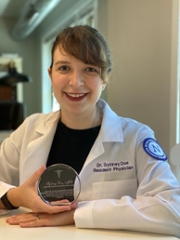
Sydney Doe, MD
Northwestern McGaw Family Medicine Residency at Humboldt Park
Prevalence and Predictors of Burnout Among Resident Family Physicians
Sydney Doe, MD PGY 3 Resident, Northwestern McGaw Family Medicine at Humboldt Park
Purpose:
Resident physician burnout may affect career choices and empathy. This national study examined associations between family medicine residents and program characteristics and burnout in the last year of training.
Methods:
We used data from the 2019-2021 American Board of Family Medicine (ABFM) Initial Certification Questionnaire. We defined burnout as a binary variable defined as reporting callousness or emotional exhaustion once a week or more. This unique data source annually captures responses from all graduating residents seeking ABFM certification. We evaluated associations using bivariate and multilevel multivariable regression analyses.
Results:
Among 11,570 graduating residents, 36.4% (n=4211) reported burnout. This prevalence did not significantly vary from 2019 to 2021. Females reported higher rates of burnout (39.0% vs. 33.4%, OR=1.29 (1.19-1.40)). Compared to White race (39.2%), Black race was associated with lower odds of burnout (30.5%, OR=0.71 (0.60-0.86)), as was Asian race (32.3%, OR=0.78 (0.70-0.86)). We observed lower burnout rates among international medical graduates (26.7% vs. 40.3%, OR=0.54 (0.48-0.60)), those planning to provide outpatient continuity care (36.0% vs. 38.7%, OR=0.77 (0.68-0.86)), and those who attended smaller programs (31.7% with <6 residents per class v 36.3% with 6-10 per class, 40.2% for those with >10 per class, p <0.0001). Educational debt over $250,000 was associated with higher burnout than no debt (OR=1.29 (1.15-1.45)).
Conclusions:
More than a third of recent PGY3 family medicine residents reported symptoms of burnout before and during the COVID-19 pandemic. The burnout rate varied significantly related to resident and program characteristics. Program directors, researchers and policymakers should be concerned by such a high rate of burnout as physicians emerge from training and into the workforce, especially given its potential impact on career choices. These findings suggest need for further investigation, mitigation, and prevention of trainee burnout and the option to look at programs that are positive and negative outliers.

Christina du Breuil, MD
Northwestern McGaw Family Medicine Residency at Humboldt Park
Towards a trauma-informed future: Analyzing the Need for and Impact of Trauma-Informed Care Training in a Family Medicine Residency Program
Objective: A growing body of research has demonstrated the importance of training in Trauma-Informed Care (TIC) during health professions education. Despite this trend, a relatively small amount of this research has focused on TIC training during medical residency.
Methods: This is a pretest-posttest study examining the impact of two 2-hour interactive sessions designed to train residents to understand and implement the basics of trauma-informed care as well as to recognize and manage signs of provider burnout and countertransference. We will conduct a pre-training survey of resident knowledge and comfort in these areas using both quantitative (Likert-scale) and qualitative assessments. A post-intervention survey will be distributed to residents to again assess resident knowledge and comfort with the curriculum as well as feedback for curriculum improvement.

Ari Epstein, DO
Northwestern McGaw Family Medicine Residency at Delnor
The Effect of a Novel Emergency Department-Initiated Buprenorphine Protocol on both ED Length of Stay for Patients with Moderate to Severe Opioid Use Disorder and ED Staff Wellness
Background: Since 2020, the COVID pandemic produced many healthcare-related disruptions, including 1) a significant exacerbation of the opioid drug crisis in the US and 2) operational challenges that affected Emergency Department (ED) provider wellness. While other studies that evaluated the effect of ED-initiated protocols using Medically Assisted Treatment (MAT) for Opioid Use Disorder (OUD) demonstrated positive benefits for patient participants, they were not dual-site studies with a control group of patients receiving non-MAT management. Even more, no previous literature explored the effect on staff wellness from an ED-initiated MAT protocol’s potential to decrease visit length and patient complexity.
Methods: This dual-site, two-arm study explored the impact of an ED-initiated buprenorphine protocol at a suburban, academic-affiliated Level II trauma center relative to a comparable ED that did not have a buprenorphine protocol. One study arm was a retrospective chart analysis that assessed patients who presented to either ED with moderate to severe OUD (n=47) over a 4-month study interval for two primary outcomes: ED length of stay and visit complexity (via medications administered and quantity of security/behavioral documentation). A second study arm was a prospective analysis of the protocol’s effect of staff wellness over the same study interval. Eligible ED providers at both sites (n=37) who opted into pre/post-intervention surveys had responses measured in a mixed-assessment approach, using 1) a 3-question assessment of ED staff based on an 10-point Likert scale and 2) a free-form survey response via the protected survey driver REDCap.
Results: Regression analyses of pre-survey responses (n=31) demonstrated no statistically significant difference between Likert responses based on either ED site or license level.
Conclusions: To be determined.

Cierra French, DO
Northwestern McGaw Family Medicine Residency at Delnor
The impact of COVID-19 on Family Medicine Residents
Background:The purpose of this study is to investigate the impact of COVID-19 on Family Medicine residents’ wellbeing and potential experiences of discrimination.
Methods: Study participants were recruited in March 2020 via snowball sampling methodology, utilizing several sources, including social media outlets and personal contacts. Inclusion criteria consisted of ability to provide informed consent and active enrollment in an accredited Family Medicine Residency Program. Exclusion criteria consisted of individuals who not in an accredited program. The survey instrument was created using a collection of previously validated survey questions, which included information on participant demographics, perception of discrimination, COVID-19 exposure, access of personal protective equipment, HERO Daily Experience Index (an instrument which evaluates an individual’s wellbeing and health in the workplace), and lastly COVID-19 impact on daily activities.
Preliminary Results: Of 75 participants, 62 completed the full survey. The group was geographically diverse, with representation from 17 states. Based on HERO survey, residents reported feeling tired (63%) and stressed (63%) in greater frequency than anger (15%) or physical pain (12%). The perception of discrimination scale demonstrated that the largest percentage of witnessed discrimination was a result of patient discriminating based on providers’ race (50%), gender (49%), ethnicity (34%), and/or sexual orientation (21%). The largest percentage of personal harassment/threatened discrimination reported by respondents was based on race (6%), gender (24%), ethnicity (2%), and/or sexual orientation (2%).
Conclusion: Health disparities and discrimination continue to exist. Unfortunately, given limitations of sample size it is difficult to make broad inferences in regards to discrimination experienced during the pandemic. However, the data provides a snapshot of resident wellness during the early stage of the pandemic and can potentially help tailor wellness interventions moving forward.

Yasmin Goelzer, MD
Northwestern McGaw Family Medicine Residency at Humboldt Park
Development of Medical Spanish Curriculum in Primary Care Residency Program
Background: Language barriers contribute to racial and ethnic disparities in health outcomes for limited English proficiency patients, 66% of which speak Spanish. Language concordance between health care providers and patients improves communication and patient experience. The Northwestern McGaw Family Medicine at Humboldt Park residency serves patients at Erie Family Health Center in the Humboldt Park neighborhood of Chicago, where approximately 60% of patients are primarily Spanish speaking. The need for competent Spanish speaking providers here is evident.
Methods: A multidisciplinary taskforce was created consisting of residents, faculty, an administrator, and a Spanish interpreter. Literature review was performed on medical Spanish curricula for residents. Starting 7/1/2018, interventions for residents were identified including a two-week intensive medical Spanish course, four-week international or domestic immersion rotation, bi-monthly didactic self-study time, a validated interactive online medical Spanish curriculum, and real-time evaluation and feedback by on-site Spanish interpreter during clinic. Effectiveness of these interventions was determined by subjective resident surveys and OSCE examination.
Results: Following one year of participation in curriculum, residents identified a subjective improvement in medical Spanish proficiency. Residents found patient encounters the most valuable teaching resource. They also identified international immersion rotations and the intensive 2-week Spanish language orientation as valuable.
Conclusions:
Intensive orientation course, international electives and exposure to Spanish speaking patients are the most effective teaching tools. Ongoing curriculum development includes incorporating longitudinal Spanish language teaching into didactics and increasing accessibility of Spanish electives. Future directions include identifying an objective measure of Spanish proficiency to assess resident longitudinal improvement.
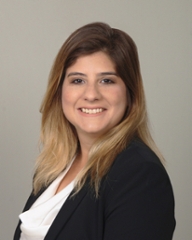
Maria Granadillo Castellon, MD
Northwestern McGaw Family Medicine Residency at Humboldt Park
Maria Granadillo Castellon, MD / Jessica McGee, MD / Esmeralda Rosales, MD PGY 3 Residents, Northwestern McGaw Family Medicine at Humboldt Park
Purpose/Background:
The purpose of this study is to evaluate the prevalence of gender microaggressions within the field of family medicine. There have been other studies that explore the prevalence of gender microaggressions in medical training (e.g., Anderson, et al., 2021; Goulart, et al., 2021), but none of these studies have been carried out in the Family Medicine (FM) field. Given that FM has been a predominantly female residency (AMA, 2015), we seek to determine if gender microaggressions are experienced by female FM doctors and if so, how prevalent they are. This will provide evidence for a follow-up study exploring the moderating effect of gender literacy in the field of FM.
Methods:
An anonymous, cross-sectional 32-item survey is being distributed to female family medicine physicians in practice or training. Respondents have been asked a series of questions detailing instances of microaggressions based on four categories: microinsults, micro assaults, microinvalidations, and physical barriers. They also have been asked to detail instances of microaggressions during each professional stage of their medical career.
Results and Conclusions:
This investigation is still ongoing, and we plan to have results by February 2023, with full results to be presented at research day. Our hypothesis is that given the predominance of female physicians in family medicine as compared to other specialties (like orthopedics, or plastic surgery), and given the efforts to increase gender literacy and reduce bias in the field, we expect that gender microaggressions are less prevalent in the field of family medicine than in other specialties. And, as mentioned before, this study will lay the groundwork for a follow-up project that aims to explore the moderating effect of gender literacy in the Family Medicine field.

Evan Hale, DO
Northwestern McGaw Family Medicine Residency at Delnor
Development of an Osteopathic Curriculum in a Community-Based Family Medicine Residency Program
The purpose of this study is to assess the integration of and attitudes toward an osteopathic curriculum in the setting of a community-based Family Medicine residency. This includes the process of developing didactics, workshops, and a clinic dedicated to Osteopathic Manipulative Medicine (OMT). The aim of this study is to gauge the consensus of the residents and faculty regarding their attitude towards OMT and to demonstrate the importance of application of OMT in a clinical setting. Two surveys distributed via REDCap evaluated the Osteopathic curriculum implemented at Delnor rated by a Likert scale. Final results and conclusions TBD.

Shaheen Jadidi, DO
Northwestern McGaw Family Medicine Residency at Delnor
Comparing Meniscus Repair and Meniscectomy: A Healthcare Database Analysis in the United States
Background: Meniscal tears are among the most common musculoskeletal injuries in the US. Surgically removing (meniscectomy) or reapproximating (meniscal repair) the torn pathology is the mainstay of treatment for these lesions. The aim of this study was to examine outcomes in meniscus repair and meniscectomy by analyzing data from a large healthcare database.
Methods: The PearlDiver database was queried for patients who had undergone either meniscus repair or meniscectomy with a minimum follow up of 2 years. Patients who had undergone both procedures or concurrent ligament reconstruction were excluded. Propensity score matching was performed to compare characteristics, postoperative outcomes, and complications via Student’s t-testing (p < 0.05) in all patients that met inclusion and exclusion criteria.
Results: A total of 8,428 patients (5,594 meniscectomy, 2,834 meniscus repair) were included in this study. At 2 years, there were lower rates of knee osteoarthritis (p = 0.001 at year 1, p = 0.021 at year 2), need for palliative injections (p = 0.001 at year 1, p = 0.005 at year 2), and reoperation (p < 0.001 at year 1, p < 0.001 at year 2) following meniscus repair versus meniscectomy. At 30 days, there were higher rates of DVT (p = 0.002), but lower rates of infection (p = 0.012) and wound complications (p < 0.001) following meniscus repair in comparison to meniscectomy.
Conclusions: This database analysis suggests that meniscal repair leads to better overall outcomes for patients than meniscectomy and should be strongly considered whenever possible for meniscal tears.

Stacey Jaimes-Herrera, MD
Northwestern McGaw Family Medicine Residency at Humboldt Park
QI Project: Development of a Health Tracking Tool for Diabetes Management
Stacey Jaimes-Herrera, MD PGY 3 Resident, Northwestern McGaw Family Medicine at Humboldt Park
Background: Patients at Erie Humboldt Park with Type II Diabetes Mellitus have poor control of their Diabetes. Our observed findings are patients do not have a good understanding of what their A1c goal is, what medications they are taking for DM management, and annual DM screenings recommended. Limited health literacy and numeracy skills are associated with suboptimal medication adherence and thereby worse glycemic control. The American Diabetes Association recommends for patients with diabetes to participate in a self-management education program, however health education materials are often written at high reading levels which are difficult to understand and utilize. Patients may benefit from health literacy and numeracy-focused tools developed to facilitate learning about their Diabetes management plan.
Methods:A tool was developed in collaboration with the Health Promotions team at Erie Humboldt Park to consolidate key information for Diabetes management in an easy format to understand and use to track health information. The tool will be accessible to all providers at Erie Humboldt Park. Patients at Erie Humboldt Park will be encouraged to bring the Diabetes Passport to each of their PCP visits to discuss any changes and assess their progress towards reaching A1c goal. Metrics assessed at the end of the intervention period will include number of patients given the health information tracking tool, number of office visits focused on Diabetes management, number of visits for which the health information tracker is brought back by the patient, DM management screenings scheduled/completed, patient-reported medication adherence, and A1c levels.
Results and Conclusions: In progress

Steffy James, DO
Northwestern McGaw Family Medicine Residency at Lake Forest
PA>IN (Prior to Admission > Inpatient Narcotics)
Lead Researcher: Gillenwater, Lane MD
Research Team Members: Jen Altounian, Estefani Marino RN, Steve Gianakopoulos PharmD, Zahra Qasem MD, Vanessa Rose MD, Steffy James DO
Presented by: James, Steffy DO
PGY 3 Resident, Northwestern McGaw Family Medicine at Lake Forest
Background:
At the time of this project, there was no specific protocol guiding the prescription of inpatient opioids for patients with chronic opioid use at Northwestern Lake Forest Hospital. While the palliative care team at Lake Forest Hospital has a system of increasing home opioid use by 25-50% for moderate pain (pain scale 4-7) and by 50-100% for severe pain (pain scale >/=8), this was found to not be used system wide. As a result, these patients were at risk for both excessive and inadequate opioid treatment while hospitalized.
Based on previous research for improving opioid management, it was found that using already existing electronic tools and a team-based approach to opioid management would help improve risk assessment and could decrease average daily MME. Unfortunately, there was not much research on how to optimize opioid use with patients who have chronic opioid use on the in-patient setting. This project was used to assess the current process in admitting patients with chronic opioid use at Northwestern Lake Forest Hospital, and to investigate improvements that can be made to ultimately create a standardized process for pain control that will allow these patients to have the relief they need during their admission as well as proper treatment and follow up on discharge.
Methods:
Hospitalists at Northwestern Lake Forest Hospital will complete a pre-assessment survey identifying the preferred method of initial opioid dosing, along with their use of MEDD (Morphine Equivalent Daily Dose) and the IL PMP (Illinois Prescription Monitoring Program) during this process. Once initial data is collected, the areas of concern will be identified and used to create a standardized process for pain control in the hospitalized patient with chronic opioid use. The study will focus on using Failure Mode and Effects Analysis (FMEA) to help identify areas of improvement and the key players that would need to be involved. The main implementations will include educating hospitalists on the role of opioid switching, appropriate dose increases, and MEDD thresholds for serious adverse events (SAE). Other interventions will be more technical, including embedding the home MEDD to the current prescribing window and Pain Monitoring summary page that can be found on the inpatient side. Outcomes that will be measured during this process will include the Hospital Consumer Assessment of Healthcare Providers and Systems surveys from patients (HCAHPS), along with comparing the average MEDD for the first 24 hours of hospitalization.
Results:
Analysis of initial surveys showed that among hospitalists at Lake Forest Hospital, there were varying starting methods for a pain plan for opioid tolerant patients, which generally favored underdosing opioids. This was with consistent reported use of IL PMP. However, while the data is available to identify the use of opioid medications prior to admission on the IL PMP, this functionality in Epic at the time of this project had no link to medication reconciliation and its use is sporadic in the admission process. Furthermore, there was no function in Epic to quantify the inpatient MME prescribed or given, and while a majority of the hospitalists used information from the home MEDD as part of their initial pain control plan, it was found to be time consuming, and few were able to recognize the MEDD thresholds at which risk of adverse events increase.
Conclusion:
The issue of improving pain therapy with opioids in patients with chronic opioid use was found to have many areas of improvement and will be an ongoing project to determine a standardized process for pain control in the acute hospital setting. One of the main issues was that there was not a concrete way in determining how much opioid medication a patient was able to obtain, which became the first goal in the project. We were able to improve the method in which opioids are ordered in the hospital setting by working with the EPIC team, making it easier for the hospital team to review the patient’s home opioid MEDD. The next step would be to work with the EPIC team to improve how we are able to use the MEDD in the in-patient side during the discharge process to decrease SAE and make sure the patients have adequate pain control and go home with the appropriate treatment.
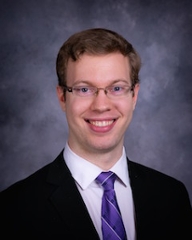
Lukasz Jaros, MD
Northwestern McGaw Family Medicine Residency at Humboldt Park
Pre-COVID Vaccine Hesitancy: A Secondary Data Analysis of a CERA Study
Lukasz J. Jaros, MD PGY 3 Resident, Northwestern McGaw Family Medicine at Humboldt Park
Background
Over the last decade there has been growing public discourse around vaccination safety and efficacy. However, it is unclear how much this discussion has spread into primary care clinical encounters and whether certain factors such as community size affected rates of vaccine hesitancy.
Methods
Data were gathered and analyzed as part of the 2020 Council of Academic Family Medicine’s (CAFM) Educational Research Alliance (CERA) survey of Family Medicine practicing physicians in the US and Canada. Participants were selected based on membership type of one of the Council of Academic Family Medicine (CAFM) organizations and current practice in the role of primary care physician (based on qualifying questions on the survey). Program directors, clerkship directors, and department chairs were excluded from the group. Qualifying participants received a letter and link to an online survey. Available data was analyzed using chi-squared testing.
Results
The survey was delivered to 3,665 family medicine physicians (3,541 U.S. and 124 Canada) between January 15, 2020, and March 2, 2020. The overall response rate for the survey was 32.52% (1192/3665). Respondents' practices were equally distributed between small (less than 75,000), medium (75,000-500,000), and large (greater than 500,000) communities. Overall between 93 and 94% of respondents noted an encounter that involved vaccine hesitancy within the last month regardless of community size (p=0.61) Increasing rates of vaccine hesitancy over the last 5 years were significantly correlated with community size with 49.3% of respondents reporting increased vaccine hesitancy compared to medium (41.8%) and large (38.1%) communities (p=0.007). Of those physicians who indicated increased vaccine hesitancy, 77.9% indicated being able to adequately address patients’ concerns in a way that resulted in them obtaining the recommended vaccinations. This was lower than physicians in communities with decreased hesitancy (85%) and unchanged hesitancy levels (83%) but not statistically significant (p=0.14). Overall 78% of physicians elected to address patient concerns by discussing clinical evicidence specific to patients’ concerns. The most often cited barrier to address patient vaccination concerns was insufficient time with 47.8% of small, 53% of medium and 50% amongst large community physicians (p=0.16).
Conclusions
Family physicians regularly experience vaccine hesitancy in their clinics, and many have been experiencing increasing rates of vaccine hesitancy over the last 5 years. Those practicing in smaller communities were much more likely to encounter vaccine hesitancy in their clinical practice. Approaches to counseling were similar amongst physicians with the majority opting to elicit patients’ concerns and providing directed information. Barriers to adequate and successful counseling were consistent amongst different communities with insufficient time cited as the biggest barrier. Further work is needed to determine true rates of vaccine hesitancy, examine patient perspectives leading to vaccine hesitancy, particularly in more rural regions, and strategies than most effectively allow for informed decision making.

Bianca Jenkins, MD
Northwestern McGaw Family Medicine Residency at Humboldt Park
Bianca Jenkins, MD PGY 3 Resident, Northwestern McGaw Family Medicine at Humboldt Park
Background:
Intimate partner violence (IPV) affects approximately 25% of women in the US and
is associated with multiple poor health outcomes. The United States Preventative Health Task
Force recommends screening for intimate partner violence in all reproductive-aged women and
for clinicians to provide or to refer for appropriate ongoing support services to patients who are
experiencing violence. Nevertheless, rates of screening for intimate partner violence among
primary care providers remains low.
Methods:
An intimate partner violence curriculum for family medicine residents was developed.
It consisted of 1) a 2-hr didactic curriculum on intimate partner-violence, including local and
hospital partner programs addressing interpersonal violence, using trauma-informed best
practices and 2) intimate partner violence Observed Standardized Clinical Examinations
(OSCEs) with standardized patients for residents to practice screening for and responding to
reports of intimate partner violence. Residents at the Northwestern McGaw Family Medicine
Residency at Humboldt Park participated in some part of this curriculum. Participants were
asked to complete a survey, abbreviated from the validated PREMIS Survey, prior to the
didactic, after the didactic and after the OSCE in order to assess its effectiveness.
Results:
Survey data still in collection at time of abstract submission; final analysis on curricular impacts and next steps will be presented on Resident Research Day.

Danika Johnson, MD
Northwestern McGaw Family Medicine Residency at Humboldt Park
Sreevidya Bodepudi, DO / Danika Johnson, MD PGY 3 Residents, Northwestern McGaw Family Medicine at Lake Forest
Background:
The ACGME has now formally recognized the role that family physicians take on as advocates. The 2022 ACGME competencies for family medicine training include that residents demonstrate basic skills in advocating for patients in the healthcare system, for ensuring quality patient care, and for identifying system errors and solutions. This project proposes to create a curriculum that supports residents to develop the skills to be successful advocates.
Methods:
Residents will complete a pre-assessment identifying the current knowledge and skills gaps regarding system-level advocacy. Using this data, a curriculum will be refined to address the identified needs. This curriculum will feature lectures and skill-based sessions. The initial lectures will review the definition, purpose, and skills to advocate at different system levels. The final sessions will emphasize practical skills including to recognize a topic to advocate for, identify stakeholders, choose the appropriate mechanism, and communicate their message. A post-survey will assess the efficacy of the educational intervention and identify areas for future improvement. We will use combination of paired t-test and chi-squared analysis to compare pre- and post- survey results.
Conclusion:
We hypothesize that a formalized advocacy curriculum will improve residents’ understanding of basic advocacy skills and confidence in their ability to utilize these skills. We hope helping residents realize that this work is actionable, sustainable, and rewarding, they will be more empowered applying these skills as attendings.

Joyce Jones-King, MD
Northwestern McGaw Family Medicine Residency at Lake Forest
Addressing Vaccine Hesitancy in the African American Community
Background: It is no secret how important the doctor-patient relationship is to patients’ health outcomes. When the relationship isn’t built on trust, there is usually a decline in patients’ health. This unfortunate outcome is commonly seen in the African American community and what is not very well known is why there is so much mistrust in the African American community when it comes to the medical field. It’s important for physicians, especially ones serving the African American community to know what has led to medical distrust over the years. Given the current state of the pandemic, it is important to assess why COVID-19 vaccination rates are so low in the African American population. This project assessed the current knowledge and confidence level of Family Medicine Resident Physicians to address COVID-19 vaccine hesitancy in African American patients.
Methods: Resident physicians were taught the history of vaccine hesitancy in the African American community and the historical relationship between the medical community and African American community. Residents participated in two lectures that were 60- 90 minutes long and were presented methods and interventions that may be utilized to address COVID-19 vaccine hesitancy. A 10-item pre- and post-didactic survey was administered to assess Resident Physician knowledge about the history of vaccine hesitancy in the black community and their confidence in addressing COVID 19 vaccine hesitancy with black patients. Descriptive statistics including frequency counts and percentages were calculated for all quantitative survey items, and the Wilcoxon Signed Rank Test was used to detect pre- to post-curriculum gains.
Results: Seventeen resident physicians attended the didactic session and completed the pre- and post-didactic evaluation survey (100% response rate). At baseline, 88.2% (15/17) of residents indicated they experienced vaccine refusal in clinical encounters with African American patients, however only 52.9% (9/17) were fairly or completely confident discussing vaccine hesitancy. Following the didactic presentations, residents reported a better understanding of the causes of medical distrust among the black community (z=2.873, p=.004), and felt more confident addressing issues of vaccine hesitancy (z=3.176, p=.001) with the ultimate goal of improving vaccination rates.
Conclusions: Overall, the didactic presentations were well received. Given the improvement documented with residents, we hope this study can serve as a blueprint to further educate other medical physicians so that the medical relationship with the black community will improve along with health outcomes.

Jasser Khairallah, DO
Northwestern McGaw Family Medicine Residency at Lake Forest
Proficiency in Cervical Cancer Screening in Substance Use Disorder Patients vs Non-Substance Use Disorder Patients
Background: Patients with diagnosed substance use disorders (SUD) are more likely to suffer from inequitable access to primary care resources. While there are multiple factors that play into this fact, some of the most prominent involve patient concerns of stigmatization and provider discomfort with screening and management of SUD. Regardless of the reason, the question is raised of how these constraints affect SUD patients’ healthcare outcomes, specifically those deemed preventable? Many studies around the world have shown poorer cervical cancer screening rates and higher prevalence of cervical cancer/cervical dysplasia in SUD patients. Oddly, some of these same studies have shown higher rates of healthcare utilization by patients with SUD. This study aims to examine the rate of cervical cancer screening in females with diagnosed SUD compared to those without SUD within a Federally Qualified Health Center (FQHC).
Methods: This was a retrospective chart review utilizing Erie Health’s electronic medical record (EMR) system, Centricity. Participants were female patients over the age of 20 receiving their care at Erie Health. Inclusion criteria for SUD categorization included patients in this age range with a history of Alcohol Dependence, Opioid Abuse, Opioid Dependence or Other Psychoactive Substance Use. Patients without these diagnoses were placed in the non-SUD category. Exclusion criteria included any patient with documented diagnosis or history of cervical cancer.
Results: Using the discriminants above, 13,869 charts were pulled from the Erie EMR. Of these female patients, 97.8% did not have SUD and 2.2% did have SUD. Of the women without SUD, 75.5% had been screened for cervical cancer compared to 71.8% of women with SUD.
Conclusions: There was no statistically significant difference in screening rates for cervical cancer between females with and without SUD. Interestingly, there was a statistically significant difference in screening rates between females with SUD over age 40 versus those 40 and younger. The prevalence of female patients with SUD was also noted to be significantly lower than the national average (about 5-7%). However, overall cervical cancer screening rates were comparable to national statistics (about 74-76%). This bares the question of whether or not we as providers have been inefficiently screening for SUD or if we are simply doing a poor job at screening for cervical cancer amongst all of our female patients? Further limitations in this study include the scarce number of diagnosis codes used to categorize SUD patients. An additional data pull request was submitted to include patients with Cocaine and Opiate dependence/abuse as well as those patients with a history of cocaine, opiate or alcohol dependence in remission. The results of this new data request is still pending.

Lauren Knazze, MD
Northwestern McGaw Family Medicine Residency at Humboldt Park
In communities that offer a needle exchange program, does intravenous drug use increase?
Background: Intravenous drug use (IVDU) is associated with increased risk of HIV, Hepatitis C, and other blood-borne viruses, mostly because of the propensity of sharing needles between participants. A needle exchange program is a harm reduction intervention designed to decrease the risk of contracting HIV, Hepatitis C., etc, by allowing participants to receive clean, sterile needles in exchange for used ones. However, there is concern that needle exchange programs increase the amount of IVDU in the area and that they increase the time needed for participants to achieve cessation of IVDU. The purpose of this review was to identify the research on the effects of needle exchange programs on IVDU.
Methods: A literature review was conducted to identify studies on needle exchange programs and their effects on IVDU. Inclusion criteria were 1) observational studies 2) published between 2000 and 2018, 3) primary outcomes included injection cessation and/or injection frequency.
Results: Many studies were identified mentioning effects of IVDU, but only two listed rates of IVDU as primary outcomes. One study shows that 33% of patients using intravenous drugs (IVDs) reported substantially fewer injections at follow-up encounters compared to initial enrollment at NEP. Those injecting every day were significantly more likely to reduce injection frequency (ARR= 3.44, 95% CL 1.46–8.09) (SOR B: cohort study). Another study comparing needle exchange program expansion to IVDU patterns of the surrounding community showed that the proportion reporting injecting cessation increased from 2.4% (95% CI: 0.0–7.0%) in 1996 to 47.9% (95% CI: 46.8–48.9%, P < 0.001) in 2010 (SOR: B, cohort study).
Conclusions: Communities with needle exchange programs (NEP) do not have increased intravenous drug use (IVDU). In fact, they may help decrease injection frequency and decrease the time to cessation. Many needle exchange programs including the ones in the studies above have additional services, such as addiction counseling, medication-assisted therapy, and other resources to aid patients with addictions. It is possible that those extra resources beyond just needle exchange contributed to the decreased rates of injection frequency and increases drug cessation. Because of these positive changes, more money and resources should be dedicated to needle exchange programs.

Michael Kraft, MD
Northwestern McGaw Family Medicine Residency at Lake Forest
Comparing Artificial Intelligence to Routine Monitors in Neonatal Evaluation: The CARE Trial
Purpose: Neonatal respiration is a pivotal marker in routine neonatal care. Continuous monitoring of respiration is critical in detecting early changes in breathing pattern and avoiding worsening outcomes such as apnea, hypoxia, or sudden infant death syndrome (SIDS). Classically, neonatal respiration is monitored by echocardiography (ECG) leads attached to the chest wall to determine thoracic impedance with increasing voltage on inspiration and decreasing voltage on expiration. However, this measurement is not perfect as body positioning and movement, as well as incomplete skin adhesion, can decrease the accuracy of these measurements. Moreover, continuous adhesive can be irritating and damaging to the neonate. Non-contact respiratory rate monitoring, using camera vision and artificial intelligence, offers a less invasive method to record these values in real time.
Methods: In the IRB approved CARE Trial, neonates admitted to the Lake Forest Hospital Neonatal Intensive Care Unit (NICU) were monitored with a camera connected to an artificial intelligence algorithm for analysis while simultaneously recording the respiratory rate display from classical ECG recording.
Results: This recorded data is under further review and algorithm refinement to determine non-inferiority when compared to the ECG monitor with results expected Spring, 2021. Preliminary results indicate that the camera vision was able to identify a reliable rhythm. Correlation to the ECG recording is currently underway.

Young Jun Lee, MD
Northwestern McGaw Family Medicine Residency at Humboldt Park
Does in-utero exposure to chemical hair relaxion have a negative impact on birth weight or other birth outcomes for infants compared to infants who do have the same exposure?
Young Jun Lee, MD
PGY 3 Resident, Northwestern McGaw Family Medicine at Humboldt Park
Background: Chemical hair relaxers often contain ingredients that are concerning to be endocrine disrupting chemicals (EDCs) such as phthalates, that can break down the protein structure of the hair. These chemicals can be absorbed topically through the scalp, and have had concerns for negative birth outcomes due to maternal exposure during pregnancy.
Methods: A literature search was performed following the protocol of the FPIN HDA program. Included studies examined pregnant patients who were asked if they had used hair relaxers during/prior to the pregnancy. Results were obtained using one retrospective cohort study and two case control studies. Results A 2006 population-based cohort study examined pregnancy outcomes among female hairdressers (N=550) which showed no significant differences in fetal loss (OR 0.7; 95% CI, 0.3-1.8), multiple births (OR 1.3; 95% CI, 0.7-2.5), preterm birth (OR 1.0; 95% CI, 0.7-1.6), small-for-gestational age (OR 1.0; 95% CI, 0.7-1.3), congenital malformations (OR 0.8; 95% CI, 0.6-1.2). A 2005 case-control analysis investigated the association of hair-relaxer use and preterm births within a large follow-up study of African-American women (N=6130). Multivariable analysis did not show significant difference in preterm birth among ever users of hair relaxers compared to never users of hair relaxers (OR 1.0; 95% CI, 0.6-1.8). In a 1999 case-control analysis of Black women in North Carolina who delivered a singleton birth preterm or with low birth weight were compared to Black women who delivered full-term, normal weight live births (N=525). In babies exposed to maternal hair chemicals, there was no increased association of preterm births (OR 0.7; 95% CI, 0.4 - 1.1) or low birth weight (OR 0.6; 95% CI 0.4 - 1.1).
Conclusion: Occupational exposures to EDCs in hairdressers did not demonstrate increase in negative birth outcomes (SOR: B, cohort study). In studies using self-reported questionnaires on use of hair relaxers at home or in a salon there was no association with reduced birth weight or preterm birth (SOR: B, case-cohort studies).

Ariel Magallon, MD
Northwestern McGaw Family Medicine Residency at Lake Forest
Ariel Magallon, MD PGY 3 Resident, Northwestern McGaw Family Medicine at Lake Forest
PURPOSE:
Social factors play a significant role in determining the health of patients. The purpose of this project was to review the process of establishing a partnership between the Northwestern Family Medicine Clinic in Grayslake, Illinois, and the Community Health Worker (CHW) program offered by Mano a Mano, a local community organization, to address the social determinants of health of the Latinx patients of the clinic.
METHODS:
This was a single-site, retrospective study. Latinx patients of the Northwestern Family Medicine Clinic were surveyed for needs within six social determinants of health (SDOH) areas. Patients who screened positive within at least one of the surveyed areas were offered a referral to the CHW for further assistance. Referrals were made via NowPow, a referral platform integrated in the Electronic Medical Record (EMR) that allowed for closed-loop communication between the CHW and the referring clinic providers.
RESULTS:
More than 30 patients who were offered a referral to the CHW were amenable to being referred. Ages of patients referred ranged from 3 years old to 82 years old. Challenges that were encountered during the project included keeping track of referrals in the setting of multiple referring providers, changes in the NowPow platform creating a barrier to closed-loop communication between the clinic and the CHW, and lower than expected referral volume for a variety of reasons. Detailed analysis of quantitative and qualitative data is ongoing.
CONCLUSION:
CHWs play an invaluable role in providing culturally sensitive and socially focused care. As primary care providers we need to be aware of these community partners and develop sustainable processes for connecting patients with these resources. This project reviewed one process of establishing such a partnership and reviewed the successes, as well as areas for improvement, to help future interested parties navigate this process.

Dunia Mardini, DO
Northwestern McGaw Family Medicine Residency at Humboldt Park
Assessing the need for nutrition curriculum development in FQHC-based Family Medicine residency programs
Dunia Mardini, DO
PGY 3 Resident, Northwestern McGaw Family Medicine at Humboldt Park
Background: Family Medicine (FM) physicians are uniquely positioned to provide medical nutrition therapy (MNT) as part of a greater framework of prevention and management of chronic diseases. Additional disparities have been identified among patients who seek care at Federally Qualified Health Centers (FQHCs) due to many patients lacking sufficient coverage for MNT benefits. However, proper education in MNT is lacking throughout the course of medical training. Previous studies have explored and identified gaps in nutrition education in medical schools and residency programs, however; none of these studies have assessed these gaps among FM residents training at FQHCs, which comes with its own unique set of challenges. The purpose of this study is to assess the need for a structured MNT curriculum in FM residency programs that provide outpatient care primarily at FQHCs. This study seeks to determine if a concise nutrition module improves confidence and motivation to provide evidence based, efficient, focused nutrition counseling among residents in a FM FQHC setting.
Methods: Following a 60-minute MNT didactics module, the study employs pre- and post-surveys to measure changes in resident attitudes, confidence levels, and perceived barriers related to providing MNT counseling. The study participants will include current FM residents who provide outpatient care primarily in an FQHC setting.
Results/Conclusions: Data collection is ongoing. If gaps in education are identified and/or our nutrition module confers benefit in skills, confidence, or attitudes for family medicine residents, it may facilitate implementation of longitudinal nutrition curricula in residency programs and ultimately improve patient-centered outcomes.

Ryan McCabe, DO
Northwestern McGaw Family Medicine Residency at Lake Forest
Screening for Substance Use Disorder (SUD) in Primary Care
Background: Substance use disorder (SUD) is one of the most common causes of preventable death, injury, and disability globally and nationally, affects approximately 14.5 percent of our population age 12 and older. By gender, of those with SUD, around 9.5% were male and 5.6% were female. A recent study looking at SUD in female patients at Erie clinic sites has shown the prevalence to be significantly lower than the national average at around 2.2%. This bears the question of whether or not we as providers have been inefficiently screening and diagnosing SUD. Many organizations, including the United States Preventive Services Task Force (USPSTF) and the American Medical Association (AMA), recommend routine screening in adults age 18 and older, however, primary care providers have historically reported low levels of preparedness to recognize and help patients with SUD which is exemplified by irregular screening practices. Effective integration of screening is key to addressing SUD and its consequences. This study aims to assess the current SUD screening practices within the Northwestern Family Medicine resident programs to further investigate the discrepancy of SUD found in our patient population.
Methods: This was a cross-sectional survey. Participants were residents of Northwestern McGaw Family Medicine Resident Training Programs from three different primary sites; Lake Forest and Humboldt Park, both of which also work at an Erie clinic site, and Delnor. The survey consisted of 12 questions and sent to a total of 69 individuals via the protected survey driver REDCap.
Results: Survey response rate 49% (34 responses). When assessing how prepared a participant felt identifying substance use disorder, 6.5% felt very prepared, 74.2% felt somewhat prepared, and 19.4% felt minimally prepared. Most individuals were screening for SUD at annual exams (58.1%) and/or if there is concern or suspicion for substance abuse (54.8%), while 3.2% never screen. The three most used screening tools include basic social history questions, CAGE questions, and AUDIT. The most common barriers to screening were patients presenting with other acute concerns (80.6%) and patients with complex medical histories that take precedence (71%). 12.9% were unaware of solutions to help patients which precluded them from screening.
Conclusions: The results of the survey show further education outlining office-based screening approaches and strategies for managing and treating SUD could help enhance screening practices within the resident programs. Limitations of this study include the response rate. This survey was initially intended to analyze SUD screening practices within all primary care providers specifically at Erie sites given the discrepancy of SUD in female patients was identified within the Erie health system, however, research inquiries through Erie were held due to conversion to a new EMR system. We hope to extend this survey to the Erie health system as a next step in hopes of expanding SUD screening practices.

Jessica McGee, MD
Northwestern McGaw Family Medicine Residency at Humboldt Park
Maria Granadillo Castellon, MD / Jessica McGee, MD / Esmeralda Rosales, MD PGY 3 Residents, Northwestern McGaw Family Medicine at Humboldt Park
Purpose/Background:
The purpose of this study is to evaluate the prevalence of gender microaggressions within the field of family medicine. There have been other studies that explore the prevalence of gender microaggressions in medical training (e.g., Anderson, et al., 2021; Goulart, et al., 2021), but none of these studies have been carried out in the Family Medicine (FM) field. Given that FM has been a predominantly female residency (AMA, 2015), we seek to determine if gender microaggressions are experienced by female FM doctors and if so, how prevalent they are. This will provide evidence for a follow-up study exploring the moderating effect of gender literacy in the field of FM.
Methods:
An anonymous, cross-sectional 32-item survey is being distributed to female family medicine physicians in practice or training. Respondents have been asked a series of questions detailing instances of microaggressions based on four categories: microinsults, micro assaults, microinvalidations, and physical barriers. They also have been asked to detail instances of microaggressions during each professional stage of their medical career.
Results and Conclusions:
This investigation is still ongoing, and we plan to have results by February 2023, with full results to be presented at research day. Our hypothesis is that given the predominance of female physicians in family medicine as compared to other specialties (like orthopedics, or plastic surgery), and given the efforts to increase gender literacy and reduce bias in the field, we expect that gender microaggressions are less prevalent in the field of family medicine than in other specialties. And, as mentioned before, this study will lay the groundwork for a follow-up project that aims to explore the moderating effect of gender literacy in the Family Medicine field.

Stephanie Miles, MD
Northwestern McGaw Family Medicine Residency at Lake Forest
Stephanie Miles, MD PGY 3 Resident, Northwestern McGaw Family Medicine at Lake Forest
Background:
In the spring of 2021, Northwestern Medicine Family Medicine Grayslake Outpatient Center participated in a social determinants of health (SDOH) screening pilot program. During the 16-week pilot, 804 patients were screened. 262 of these patients (35%) screened positive for one or more SDOH needs. Of those who screened positive, the most common needs identified were mental health (48%), food insecurity (14%), and medication affordability (12%). Less common concerns included social connections (9%), housing insecurity (7%), transportation (6%), and medical home (4%). Out of the patients who screened positive, only 1/3 (32%) requested assistance in addressing one or more of their needs. Little is known about patients’ perceptions and experiences with available SDOH resources and interventions.
Methodology:
Process and outcome measure study that uses a survey to evaluate patients’ experiences and patient report via focus group outcomes of a primary care based intervention that helps connect them with community resources.
Study Design:
Selected participants who screen positive with SDOH will be asked to take part in a focus group discussion. Focus groups will be audio recorded, and later transcribed and analyzed using NVivo software.
Intervention:
This qualitative analysis will look for themes distinguishing patient-given reasons for not accepting resource support as well as suggestions for healthcare personnel implementing resource programs in the future.

Caitlyn Mink, MD
Northwestern McGaw Family Medicine Residency at Lake Forest
MINDing the Gap: Addressing Disparity in Meeting the Learning Needs of Neurodivergent Medical Trainees
Caitlyn Mink, MD, PGY 3 Resident, Northwestern McGaw Family Medicine at Lake Forest
Background: Late diagnosis of autism spectrum disorder (ASD) and attention deficit hyperactivity disorder (ADHD) in physicians can lead to significant negative impacts on their personal and professional lives. However, despite the potential benefits of early diagnosis and intervention, many physicians may not be diagnosed until later in life. This research project explores the prevalence of late ASD and ADHD diagnoses in physicians and identifies potential barriers to early diagnosis.
Methods: A meta-analysis was conducted on physicians who were diagnosed with ASD or ADHD after the age of 18. Data on demographics, presenting symptoms, diagnostic process, and treatment were collected and analyzed. Results: Common presenting symptoms included difficulties with social interaction, executive functioning, and attention. Barriers to diagnosis included stigma, lack of knowledge about the conditions, and fear of professional consequences.
Discussion: Recommendations for improving the diagnostic process and increasing awareness about ASD and ADHD among physicians include the following: need for increased education and training for physicians, the establishment of support groups and resources for individuals with ASD and ADHD in the medical profession, and the development of screening tools and protocols for early identification of these conditions. Overall, this study highlights the importance of early diagnosis and intervention for ASD and ADHD in physicians, and the need for increased awareness and support within the medical community.

Roxana Moraga, MD
Northwestern McGaw Family Medicine Residency at Lake Forest
Optimizing Feedback Delivery in a Family Medicine Continuity Clinic
Roxana Moraga, MD PGY 3 Resident, Northwestern McGaw Family Medicine at Lake Forest
Background: Effective, quality, and timely feedback is fundamental in residency training. Ideally, feedback for residents should be timely, specific, and actionable. However, a common theme seen in the literature is that delivering this kind of feedback can be difficult. Common obstacles for faculty include time constraints, patient care responsibilities, logistical issues (lengthy feedback forms, no standardized method of feedback delivery), or lack of feedback delivery training. From the resident perspective, there can often be major dissatisfaction with regards to feedback delivery as the feedback received is often vague and unhelpful.
Methods: Our program recently reviewed our annual ACGME survey results and found there was a need for increased resident satisfaction with faculty feedback delivery. We sought to address this need by developing a point-of- care tool for feedback delivery that was timely, specific, and actionable. We developed a QR code that led faculty to a short and directed feedback requisition form. The feedback was immediately delivered to residents and was eventually compiled with other assessments to gauge long term progress.
Conclusion: With this intervention, we predict resident and faculty satisfaction with feedback will increase.

Matt Moran, MD
Northwestern McGaw Family Medicine Residency at Humboldt Park
PrEP Prescribing Habits Among Family Medicine Residents
Matt Moran, MD
PGY 3 Resident, Northwestern McGaw Family Medicine at Humboldt Park
Background: Prescription of pre-exposure prophylaxis (PrEP) for individuals at increased risk of HIV is a Grade A recommendation from the USPSTF; however, only 30% of individuals who could benefit from these medications were prescribed them in 2021; questions remain about why PrEP is not more widely prescribed. This study aims to focus on clinician interest and education, specifically on readiness and comfort with prescribing PrEP, as well as the encountered, perceived, and anticipated barriers to its prescription. The data gleaned from this study will look at PrEP prescription among family medicine residents at an academic medical center and hopefully allow for insights into the specific barriers faced at similar institutions. While there exist studies assessing comfort in PrEP prescription before and after educational interventions, there are fewer studies that look at specific barriers, and even fewer looking at these barriers and habits among the medical specialty that produces the most primary care providers – Family Medicine.
Methods: A survey will be distributed to the residents of Northwestern’s Family Medicine residencies. The survey will collect information regarding the respondents’ experience and familiarity with prescription of PrEP, as well as encountered and anticipated barriers.
Results: It is anticipated that this survey will reveal a familiarity with PrEP, but a lack of experience with its prescription, with administrative factors and personal interest and education contributing to prescription habits. Conclusions: This study will contribute to literature about PrEP prescription in the primary care setting, and hopefully further identify barriers to clinician readiness for its use.

Chaitasi Naik, DO
Northwestern McGaw Family Medicine Residency at Delnor
Body surface area as a predictor of post-partum hemorrhage risk
Postpartum hemorrhage remains one of the most common contributors to maternal morbidity and mortality. In trauma and critical care, one factor that contributes to determining classes of shock is blood loss based on % volume, calculated based on body surface area. To date, there is only one study that has studied body surface area as it applies to post-partum hemorrhage. The purpose of our study is to study body surface area (BSA) as it applies to post-partum hemorrhage (PPH).
A retrospective analysis was performed using data accessible through EDW. We studied deliveries at Delnor Hospital from July 2019 to December 2020. Data points included age, gestational age, gravida/parity, method of delivery, height, weight, BMI, and quantitative blood loss. BSA was calculated using the Dubois formula. The BSA was further divided into quintiles to evaluate if a greater BSA resulted a greater percentage of blood loss.
Our data show that there is no relationship between body surface area and post-partum hemorrhage. We found that cesarean section deliveries had greater blood loss as compared to vaginal deliveries. Our study did show that pregnant patients lose about 8% of total blood volume with vaginal deliveries, whereas C-sections lose 15% of their total blood volume. One outlier, while not statistically significant, is that the patients with greater BSA at baseline did have less blood loss in C-sections compared to lower BSA patients.

Jason Ng, MD
Northwestern McGaw Family Medicine Residency at Lake Forest
Family history taking in primary care. A review of current guidelines, challenges, disparities and future directions.
Jason Ng, MD PGY 3 Resident, Northwestern McGaw Family Medicine at Lake Forest
Background:
Family history taking remains an important component for preventative care in the primary care setting. Despite technological advances in genetic testing and genomic sequencing, family history provides a low cost and practical means for assessing risk of chronic diseases. Cancer screening algorithms often utilize family history in determining appropriateness for screening. Although genetic testing alone may provide a more definitive risk assessment for disease if a known gene mutation is present, family history encompasses other risk factors such as modifiable behaviors, epigenetic and social determinates of health. Although the utility of thorough family history taking is well-established, obtaining this history is often challenging in the clinical setting.
Methods:
Literature review was conducted to obtain a summary of guidelines for the recommendations for obtain family history for the guidance of breast, colon and prostate screening, the mortality benefits of screening, and the challenges and disparities of family history gathering for underserved populations, and future technological and methodological strategies to improve family history taking.
Conclusions:
Positive family history is a significant risk factor for the most common cancers screened in the primary care setting. Yet, family history taking remains underutilized especially in underserved communities. A combination of physician/patient education and process improvement involving electronic medical records are potential means to improve the collection and utilization of this information.

Jennifer Nguyen, MD
Northwestern McGaw Family Medicine Residency at Humboldt Park
Teaching Health Centers in Primary Care: A Scoping Review
Jennifer Nguyen, MD PGY 3 Resident, Northwestern McGaw Family Medicine at Humboldt Park
Purpose:
The 340b Program is a federal program that provides medications to patients that are uninsured or low-resourced predominantly receiving services at Federally Qualified Health Centers (FQHCs) in the outpatient setting. This study looks at the impact of manufacturer-led formulary changes in 2022 on diabetes outcomes, primarily glycemic control and secondarily renal function, in patients of Erie Family Health Center, a Chicago-based FQHC.
Methods:
We identified patients who were affected by formulary changes in diabetes medications, namely sitagliptin/metformin (Janumet) and sitagliptin (Januvia), with the assistance of Erie Family Health Center’s Pharmacy Team. Patients were included in the study if they had A1c values, creatinine values, glomerular filtration rates, and urine microalbumin levels (the variables of interest) checked at least once one year before and after they were scheduled to run out of their previously covered medication. Data was obtained through patients’ EMR charts and recorded in REDCap.
Results and Conclusion:
The study is still in progress. The hypothesis is that patients affected by these formulary changes of these critical medications had negative impacts on their diabetes outcomes due to the limitations placed on their medication options.

Brittney Nowicki, DO
Northwestern McGaw Family Medicine Residency at Lake Forest
Implementation of an Osteopathic Manipulative Treatment Curriculum in an Allopathic Family Medicine Residency
Background: With the single graduate medical education accreditation system and the rising number of osteopathic physicians in the United States, there is a need to increase education dedicated to osteopathic philosophy, principles, and specific treatments.
Purpose: This curriculum, led by osteopathic resident physicians, aims to educate allopathic resident physicians on the osteopathic philosophy, anatomy, and introductory manipulation techniques through didactic lectures and hands-on workshops.
Methods: A 9-item pre-curriculum survey was developed to gauge familiarity and comfortability of osteopathic manipulative treatment among the family medicine allopathic and osteopathic residents. A three lecture and three workshop series was presented to the residents during the scheduled didactics time, where each session lasted about 45 minutes. After completion of the lectures/workshops, a post-curriculum survey was conducted and pre/post curriculum survey answers were compared using a Wilcoxon matched-pair sign rank test.
Results: A total of two osteopathic residents and eleven allopathic residents completed the pre-curriculum survey. At baseline, 42.6% of residents were either uncomfortable or very uncomfortable diagnosing musculoskeletal complaints using palpatory skills. Only 30.8% reported they were likely or extremely likely to use OMT for their patients. Pending completion of the curriculum, full results will be presented at research day.
Conclusion: Preliminary data suggest residents are interested in OMT learning opportunities, and the curriculum was well received. Full evaluation findings will be used to refine and improve curricular content in subsequent academic years.

Temiwumi Ojo, MD
Northwestern McGaw Family Medicine Residency at Lake Forest
Addressing Vaccine Hesitancy in the African American Community
Background: It is no secret how important the doctor-patient relationship is to patients’ health outcomes. When the relationship isn’t built on trust, there is usually a decline in patients’ health. This unfortunate outcome is commonly seen in the African American community and what is not very well known is why there is so much mistrust in the African American community when it comes to the medical field. It’s important for physicians, especially ones serving the African American community to know what has led to medical distrust over the years. Given the current state of the pandemic, it is important to assess why COVID-19 vaccination rates are so low in the African American population. This project assessed the current knowledge and confidence level of Family Medicine Resident Physicians to address COVID-19 vaccine hesitancy in African American patients.
Methods: Resident physicians were taught the history of vaccine hesitancy in the African American community and the historical relationship between the medical community and African American community. Residents participated in two lectures that were 60- 90 minutes long and were presented methods and interventions that may be utilized to address COVID-19 vaccine hesitancy. A 10-item pre- and post-didactic survey was administered to assess Resident Physician knowledge about the history of vaccine hesitancy in the black community and their confidence in addressing COVID 19 vaccine hesitancy with black patients. Descriptive statistics including frequency counts and percentages were calculated for all quantitative survey items, and the Wilcoxon Signed Rank Test was used to detect pre- to post-curriculum gains.
Results: Seventeen resident physicians attended the didactic session and completed the pre- and post-didactic evaluation survey (100% response rate). At baseline, 88.2% (15/17) of residents indicated they experienced vaccine refusal in clinical encounters with African American patients, however only 52.9% (9/17) were fairly or completely confident discussing vaccine hesitancy. Following the didactic presentations, residents reported a better understanding of the causes of medical distrust among the black community (z=2.873, p=.004), and felt more confident addressing issues of vaccine hesitancy (z=3.176, p=.001) with the ultimate goal of improving vaccination rates.
Conclusions: Overall, the didactic presentations were well received. Given the improvement documented with residents, we hope this study can serve as a blueprint to further educate other medical physicians so that the medical relationship with the black community will improve along with health outcomes.

Beverly Onyekwuluje, MD
Northwestern McGaw Family Medicine Residency at Delnor
How Does Insurance Status Relate to Trust Regarding Information About COVID-19 in Residents of the State of Illinois?
Beverly Onyekwuluje, MD
PGY 3 Resident, Northwestern McGaw Family Medicine at Delnor Hospital
Our study is a retrospective study to investigate the effects of implementation of a weekly urgent care on FM resident patient contact hours and exposure to multiple disease states in one year. Patients are increasing using walk-in clinic and urgent cares to access urgent primary care needs in a convenient matter. Training the next generation of physician to be comfortable in urgent care settings is vital to addressing the health needs of the population. An urgent care clinic in a residency can be used to supplement education for residents in population they may not encounter as frequently, including pediatrics. Following UNC FMRs study on the impact of implementation of a urgent care clinic, our goal is to reexamine the utility of implementing an urgent care as a Family Medicine Clinic, especially given the increase in demand for care post the COVID-19 lockdown. The first aim is assessing the patient population breakdown of patients (e.g pediatrics) seen by residency at urgent care visits compared to normal hours. Our second aim is assessing the composition of chief complaints seen at an FMR urgent care clinic and their disposition. Using the electronic medical records, we will collect demographics, chief complaints, visit diagnoses, encounter orders, lab results, medications, outcomes, discharge disposition, billing charge, education/resources/support provided, readmissions and emergency room visits. All analyses will be done using STATA. P-values between variables will be calculated. The current results and conclusion of the study is in process.

Nicole Paprocki, DO
Northwestern McGaw Family Medicine Residency at Humboldt Park
Resident Readiness to Address Intimate Partner Violence: Curriculum Development, Implementation, and Evaluation at a Family Medicine Residency
Background: Intimate partner violence (IPV) affects approximately 25% of women in the US and is associated with multiple poor health outcomes. The United States Preventative Health Task Force recommends screening for intimate partner violence in all reproductive-aged women and for clinicians to provide or to refer for appropriate ongoing support services to patients who are experiencing violence. Nevertheless, rates of screening for intimate partner violence among primary care providers remains low.
Methods: An intimate partner violence curriculum for family medicine residents was developed. It consisted of 1) a 2-hr didactic curriculum on intimate partner-violence, including local and hospital partner programs addressing interpersonal violence, using trauma-informed best practices and 2) intimate partner violence Observed Standardized Clinical Examinations (OSCEs) with standardized patients for residents to practice screening for and responding to reports of intimate partner violence. 24 residents at the Northwestern McGaw Family Medicine Residency at Humboldt Park participated in some part of this curriculum. Participants were asked to complete a survey, abbreviated from the validated PREMIS Survey, prior to and two months after the curriculum was implemented in order to assess its effectiveness.
Results: Post-survey data still in collection at time of abstract submission; final analysis on curricular impacts and next steps will be presented on Resident Research Day.

Kajal Patel, MD
Northwestern McGaw Family Medicine Residency at Lake Forest
An Evaluation of Provider Continuity In Relation to Diabetic A1c Control
Purpose: While there is copious research on the benefits of continuity of care on diabetic control, there is minimal data on the role of provider alignment in diabetic outcomes. This study aims to examine the impact of consistent provider alignment on glycemic control in Type II diabetic patients.
Methods: We conducted a multi-site, retrospective cohort study. Patient data was extracted from the thirteen FQHC sites that comprise Erie Family Health Centers, in Chicago, Evanston and Waukegan, Illinois. 4,478 patients met the following inclusion criteria: a) diagnosis of Type II diabetes mellitus (non-pregnant and without active substance misuse disorder) receiving care between 2008 and 2017. Our chart review assessed: a) hemoglobin A1C value at the time the diagnosis of DM was first used as the billing code for an office visit and 36 months after this index visit and b) provider alignment, defined as the number of different medical providers the patients saw for office visits related to diabetes during the 36 months after the DM diagnosis was first associated with an office visit. This study was reviewed by the Northwestern University Institutional Review Board (00210813).
Results: Analysis of covariance (ANCOVA) was conducted to determine whether patients’ most recent A1C values are related to provider alignment after controlling for baseline A1C values. The overall model was significant (F=531.9, p<.001, r2=0.33), however the fixed factor representing provider alignment was not a significant term (F=2099.79, p=0.821). Baseline A1C was a significant predictor (F=.306, p<.001, partial eta squared=.323), suggesting a stronger association with final A1C than provider alignment.
Conclusion: Our retrospective review of a cohort of type II DM patients receiving outpatient services at urban FQHCs demonstrated a descriptive relationship between provider continuity and glycemic control, however this association was not statistically significant. More research would be beneficial to refine our understanding of these variables, and to determine not only the impact of provider consistency on hemoglobin A1c but the overall impact on quality of life.

Dhara Patel, MD
Northwestern McGaw Family Medicine Residency at Lake Forest
Implementation of a Simplified Outpatient Family Medicine Procedure Manual
Dhara Patel, DO
PGY 3 Resident, Northwestern McGaw Family Medicine at Lake Forest
Background:
Primary care physicians perform a wide variety of common outpatient procedures. This makes it important for residents to master their procedural skills during residency training. At one community-based Family Medicine residency program, residents obtain their outpatient training at two continuity clinics including Erie HealthReach in Waukegan and Northwestern Medical Group in Grayslake, allowing several opportunities to perform outpatient procedures. However, in-office procedures can often be frustrating and cause delays if residents are not familiar or comfortable with preparing for them or performing them. A standardized Family Medicine procedure manual was created to help alleviate the challenges associated with outpatient procedures and increase resident willingness to do them. This study aims to evaluate if the implementation of a standardized procedure manual at the two continuity clinics increases resident familiarity and comfort level with outpatient procedures.
Methods:
A 9-item pre-survey was developed to gauge familiarity and comfortability with performing outpatient family medicine procedures. A standardized family medicine procedure manual was created and implemented at two continuity clinics of a residency program. For each procedure, the manual included the equipment needed to perform the procedure including a picture of the tray set-up, billing and coding information, procedure steps, a QR code linking a video tutorial of the procedure, and patient counseling on post-procedure care. After implementation of the manual, a post-survey was administered to assess changes in resident familiarity and comfort level with performing the procedures.
Results and Conclusion:
Data collection currently in process

Jay Patel, MD
Northwestern McGaw Family Medicine Residency at Lake Forest
Examining Continuity of Care in Family Medicine Residency: Implications and Impact on Resident Development
Jay Patel, MD, PGY 3 Resident, Northwestern McGaw Family Medicine at Lake Forest
Background: Continuity of care is an essential component of family medicine outpatient practice. It improves patient-physician relationships, increases patient and provider satisfaction, and improves health outcomes. The recent 2023 ACGME guidelines recommend specific minimum continuity requirements for PGY-2 and PGY-3 residents. However, many family medicine residencies lack continuity of care due to resident scheduling and various rotations of a training program. This leads to inefficient, costly care.
Methods: In this study, we investigate the factors leading to discontinuous care and its effects on resident confidence as they transition into independent practitioners. We analyzed medical records, patient data, and resident experiences to elucidate the factors leading to more discontinuous care.
Conclusion: The biggest contributors for discontinuous care are associated with the scheduling limitations of residency. The findings from this project will serve as a foundation for discussion about the elements and effects of fragmented care in family medicine residency training programs, and it may offer solutions to help improve the residency curriculum.

Ari Pence, MD
Northwestern McGaw Family Medicine Residency at Humboldt Park
Evaluation of a Novel Newborn Feeding Assessment Tool to Increase Resident Comfort and Skill in Providing Basic Breastfeeding Support to Patients
Purpose: The American Academy of Family Physicians, along with the AAP, recommends that all babies, with rare exceptions, be exclusively breastfed for approximately six months and continue breastfeeding with appropriate complementary foods for at least one year. Family physicians are uniquely positioned to champion breastfeeding efforts, as we provide comprehensive care to the whole family. Despite the growing evidence of the health risks of not breastfeeding, family physicians do not often receive adequate training about supporting breastfeeding.
Methods: Study design: Cross-sectional survey. Participants: Family medicine residents at Northwestern Family Medicine at Humboldt Park, Lake Forest and Delnor campuses. Measures: Outcomes were measured through quantitative and qualitative survey items.
Results: Data collection and review is currently underway, however preliminary results suggest that the implementation of a Newborn Feeding Assessment Tool did improve resident comfort and skill in providing basic breastfeeding support to patients. Survey results also did illustrate remaining knowledge gaps in the area of breastfeeding medicine which support the argument that one training session is not sufficient. Residents, and subsequently their patients, would benefit from a longitudinal curriculum for breastfeeding medicine.

Alicia Pereslucha, MD
Northwestern McGaw Family Medicine Residency at Lake Forest
The Impact of a Structured Inpatient Medicine Curriculum on Volume of Formal Teaching and Resident Satisfaction
Background: Resident education takes place in a variety of settings and through myriad modalities. At one academically-affiliated, community-based Family Medicine residency program, residents identified the Adult Inpatient Medicine rotation as an area of the curriculum with the most potential for improvement. In the spirit of continued improvement, one proposed solution was a formal curriculum structured into the typical day on service as a way to limit barriers to teaching that had been identified by residents. This project was intended to evaluate impact of a structured inpatient medicine teaching curriculum on the level of satisfaction of these Family Medicine residents regarding teaching on the Inpatient Medicine service. Furthermore, the project will evaluate the contact time the residents spend in a structured teaching setting and if a formal curriculum affects this amount.
Methods: This was a cross-sectional study conducted over the course of Academic Year 2019-2020 and was extended to December of Academic Year 2020-2021 in light of curriculum interruptions in the setting of the COVID-19 pandemic. Participants consisted of former and current Family Medicine residents at the McGaw Northwestern Lake Forest Family Medicine residency program. Surveys were administered before and after the implementation of a structured curriculum. The main outcome measures were time spent in a formal teaching setting and resident attitudes toward a formal teaching curriculum.
Results: A total of n=22 residents completed the pre-curriculum survey and n=10 completed the post-survey. Of all residents who participated in at least one of the surveys, only 4.5% of respondents reported spending at least 30 minutes per week participating in formal teaching, compared to 83% of respondents at the time of the post-survey. Likewise, after the implementation of the curriculum 70% of all respondents reported participating in 4-5 formal teaching sessions per week compared to 0% in the pre-implementation survey.
The Wilcoxon signed rank test was used to gauge improvement among matched pre/post pairs among the following domains: learning high yield topics (z=1.73, p=.083, n=6), sense of enhanced education (z=1.89, p=.059, n=6), improving skills as a teacher (z=1.89, p=.059, n=6), and adequate teaching on the inpatient service (z=1.89, p=.059, n=6). Though results were not significant at the .05 alpha level threshold, several tests were approaching .05 and thus a larger sample may provide more power to detect significant differences.
Conclusion: The implementation of a formal, structured teaching curriculum during the Adult Inpatient Medicine service at one academically-affiliated community-based Family Medicine residency program resulted in an increase in both the number of formal teaching sessions that occurred each week and the contact time spent in a structured teaching setting. Furthermore, a positive trend was observed for resident perspectives regarding the amount of teaching, learning the necessary high-yield topics, and overall enhancement in their education.

Holly Perez, MD
Northwestern McGaw Family Medicine Residency at Delnor
Incorporating a Standardized Educational Framework to Address Social Determinants of Health within a Family Medicine Residency
Holly Perez, MD
PGY 3 Resident, Northwestern McGaw Family Medicine at Delnor Hospital
Background: Understanding and addressing social determinants of health (SDH) is essential to comprehensive patient care and family medicine residency (FMR) education. The Accreditation Council for Graduate Medical Education (ACGME) requires FMR programs to incorporate SDH into residency curriculum, but does not provide a standardized framework to do so. This project sought to identify an expert-informed, standardized framework for teaching family medicine residents to address SDH within the literature and adapt one FMR program’s SDH curriculum to this framework.
Methods: The framework outlined by the 2016 Consensus Study Report published by the National Academies of Sciences, Engineering and Medicine titled A Framework for Educating Health Professionals to Address the Social Determinants of Health was selected for this project due to its comprehensive, expert-informed approach to development and support from both the ACGME and the American Board of Family Medicine. This project focused specifically on implementation of the framework’s community pillar, establishing a reciprocal commitment with a local free clinic by providing requested after-hours services.
Results and Conclusions: In progress

Annie Phung, MD
Northwestern McGaw Family Medicine Residency at Delnor
Innovative Family Medicine Residency Program Approach to Morbidity and Mortality Conferences
Annie Phung, MD
PGY 3 Resident, Northwestern McGaw Family Medicine at Delnor Hospital
Background: Morbidity and mortality (M&M) conferences are an important component in medical practice and education by providing opportunities to learn about patient safety and quality improvement. While less studied and utilized in primary care, family medicine residency programs can benefit from these conferences. Our project seeks to study an innovative approach to the M&M conference by integrating discussion of core family medicine domains in a group setting with a conference called Morbidity, Mortality, and Discussion (MM&D).
Methods: Each monthly MM&D conference includes case presentation, breakout groups in discussion “domains”, report out and team reflection, concluding with a brief lecture on case learning points. Groups discuss parts respective to each domain: medical decision making, communication and teamwork, system-based care, and equity and advocacy. Presenters include junior and senior residents who debrief about the case in creating the presentation. Participants include all family medicine residents and faculty at the program. A survey was administered to all participants, including Likert-items and open response questions throughout the 2023-2024 academic year. Quantitative survey items were summarized using descriptive statistics, including frequency counts, cross-tabulations, means and standard deviations. Qualitative data reviewed using the hybrid coding model and analyzed with content and thematic methods. Results: There were 45 survey responses (73% response rate) from 3 inpatient MM&D conferences. Presenters (n=5) report that presenting a case in the MM&D conference was a positive experience. Participants (n=35) overwhelmingly report the positive impact on their education. Among all questions, the largest variance was observed between different subgroups (faculty/residents, PGY2/PGY3) when asked if MM&D conferences were more educational than traditional didactic lectures. In the open response portion, three themes were identified: structure, education, and culture. Respondents value the conference’s structure for group discussion in domains and learning from peers.
Results and Conclusions: In this preliminary analysis of our pilot MM&D conference, residents and faculty view the conference positively and value the opportunity to discuss cases in a structured group setting. This pilot adds to family medicine curriculum, highlighting a benefit for group case discussion. Future surveys will be done from both inpatient and clinic settings.

Kyle Plante, MD
Northwestern McGaw Family Medicine Residency at Delnor
How Does Insurance Status Relate to Trust Regarding Information About COVID-19 in Residents of the State of Illinois?
Kyle Plante, MD PGY 3 Resident, Northwestern McGaw Family Medicine at Delnor Hospital
Introduction:
Since the beginning of the COVID-19 pandemic, there has been constant stream of information from sources ranging in credibility. It has been suggested that the level of panic associated with the pandemic correlates with the knowledge and perceptions of the general population, which is directly influenced by the information they receive. This study aims to better characterize what sources of information are trusted most and how insurance status might affect this trust in residents of the State of Illinois.
Methods:
Data was collected using a survey instrument that was composed of several validated survey questions obtained from the NIH Office of Behavioral and Social Science Research (OBSSR). Responses were collected using RedCap software and Facebook advertising. Survey questions characterizing respondents’ demographics, trust of various information sources, and trust of healthcare providers were analyzed across different insurance groups.
Results:
The study consisted of 773 respondents, 55.5% private insurance, 37% Medicare, 4.4% Medicaid, and 0.9% Uninsured. Those with Medicaid had a lower trust of physicians, the CDC, and the WHO, compared to those with private insurance or Medicare. Those with Medicaid had more trust in information from social media and information gained from friends and family members, compared to those with private insurance or Medicare.
Discussion:
It has been well documented in the literature that socioeconomically disadvantaged groups, including low-income populations, are less likely to trust physicians. Misinformation from various sources may contribute to a lack of trust in the healthcare system, which has been especially apparent during the COVID-19 pandemic. Our research suggests that individuals with Medicaid insurance have a lower level of trust in physicians, as well as in national and international medical authorities about COVID-19.

Carol Platt, DO
Northwestern McGaw Family Medicine Residency at Humboldt Park
Improving Bone Health Screening and Treatment in an Urban FQHC Setting
Osteoporotic fractures are a major cause of morbidity and mortality among elderly patients. Hip fractures in particular are a frequent cause of institutionalization for elderly patients, and are associated with reported one-year mortality rates ranging from 14 to 58%. Though less commonly lethal, vertebral and forearm fractures are common causes of chronic pain and impaired ability to perform activities of daily living. Screening tools, including clinical risk assessments and radiographic measurements of bone density, are available to assess individuals’ risk of osteoporotic fractures. The USPSTF recommends universal screening for osteoporosis among women greater than 65 years of age using DXA measurement of bone density. Chart review at an urban FQHC revealed that just 37% (41/110) of female patients aged 65-85 had either a bone density diagnosis in their chart or had completed DXA screening. Interventions to improve screening compliance are underway, including provider education, systematic chart review, and the use of EMR pop-up notifications to increase the rates of bone density screening and appropriate interventions for this patient population. Data collection to assess the impact of these interventions revealed a significant increase in rates of screening over the studied timeframe; however, these results are confounded by the impact of COVID-19 on provider habits and screening accessibility.

Zahra Qasem, MD
Northwestern McGaw Family Medicine Residency at Lake Forest
Journal club curriculum: An evaluation of the ABFM National Journal Club Pilot Program
Background: Evidence based medicine (EMB) has become the effective approach to improve the health care quality and outcomes of patients. It is one of the core milestones/skills that residents work on during training and are periodically evaluated on as well. The goal is to develop a lifelong learning skill to provide the highest quality of care. Journal club has been a venue to improve EBM skills for many years. A few of the main common goals of journal club are developing critical appraisal skills, having an impact on clinical practice, and staying up to date with the current literature. In the Summer of 2021, the American Board of Family Medicine (ABFM) launched the National Journal Club pilot. It is a pilot program that provides 100 articles annually for Diplomates and residents to utilize to keep up with contemporary, practice-changing evidence.
The purpose of this project is to explore the correlation between the quality of articles chosen as a part of the pilot program and our journal club evaluation metrics to identify components of journal articles associated with better learning outcomes.
Methods: We performed a bibliometric analysis to describe the body of literature selected by the ABFM for its journal club pilot. Each article was scored using the Medical Education Research Quality Instrument (MERSQI) to assess methodological quality. This instrument includes 10 items grouped in 6 domains of study quality, including: study design, sampling (number of institutions and response rate), type of data, validity evidence (internal structure, content, and relationships to other variables), data analysis (appropriateness and complexity), and outcomes. The total MERSQI score ranges from a minimum possible score of 5 and a maximum possible score of 18, with higher scores indicating higher quality. Before our inaugural journal club session, we collected baseline survey data to document participants’ previous research experience and confidence critiquing journal articles. Following each journal club session, evaluation data were collected to assess learner satisfaction. We plan to explore correlations between MERSQI scores and evaluation data to guide article selection moving forward.
Results: 43 journal club articles from 25 journals were included in the ABFM Journal Club Pilot. MERSQI scores ranged from 13 to 18, with the average being 16.31. At baseline, a majority of residents indicated they had none or minimal experience evaluating journal articles (n=22, 52.4%). For instance, only a third of our residents were confident in critically evaluating a clinical research study and more than a third did not feel confident in their ability to interpret statistical methods, confidence intervals or study's power. Though the pilot is still ongoing, preliminary evaluation data indicates increased residents’ confidence in research appraisal skills.

Kinga Radowska, DO
Northwestern McGaw Family Medicine Residency at Delnor
Outpatient Use of First Generation Cephalosporins for the Empiric Treatment of Uncomplicated UTI
Kinga Radowska, DO
PGY 3 Resident, Northwestern McGaw Family Medicine at Delnor Hospital
Background: Community-acquired UTI is one of the most commonly diagnosed disease process by primary care physicians. It is estimated that 60% of women and 12% of men will have a urinary tract infection at some point in their lives (Urology Care Foundation). The Delnor antibiogram suggests that first-generation cephalosporins are appropriate as first-line empiric treatment for urinary tract infections for patients in our community. Nevertheless, therapeutic decisions are made on a case-by-case basis and depend heavily on the clinical scenario. My research set out to determine whether patients treated empirically with 1st generation cephalosporins have significant differences in success rates than patients treated with other antimicrobials.
Methods: We analyzed the charts of all patients who were treated empirically for uncomplicated UTI at Northwestern Delnor Family Medicine Residency Clinic. We compared treatment success rates for patients treated with 1st generation cephalosporins vs with any other antibiotic. We then looked specifically at the patient who failed treatment with 1st generation cephalosporins to see what their outcomes were.
Results/Conclusions: In Progress

Samuel Randall, MD
Northwestern McGaw Family Medicine Residency at Lake Forest
A 10,000 Foot View: A Spanish Immersion and Clinical Global Health Experience for the Family Medicine Resident in Quito, Ecuador
Background: This presentation is a review of a 4-week Spanish immersion elective in Quito, Ecuador through Child and Family Health International (CFHI) and Northwestern University.
Methods: Objectives include 1. Fostering local partnerships, 2. Improving healthcare access, and 3. Increasing Spanish language proficiency. Time was spent providing direct care to patients in clinic and observation in family medicine, inpatient obstetrics, and a rural indigenous clinic. Daily Spanish lessons and home-stay were integral to the program.
Results: Twenty-four patients were examined in clinic. The resident’s medical Spanish competency increased from baseline. All learning objectives were met and as a summary, a checklist was developed to guide medical residents planning similar immersion rotations.
Conclusions: Based on this experience, key considerations for success include: an emphasis on local-partnership, medical supervision, bioethics, and continuity of care. This case highlights the value of global medical education and helps providers serve patients in increasingly diverse settings.

Daniel Reine, MD
Northwestern McGaw Family Medicine Residency at Delnor
Daniel Reine, MD PGY 3 Resident, Northwestern McGaw Family Medicine at Delnor Hospital
Background:
Prior research has shown that adverse childhood experiences (ACEs) confer increased risk of negative health outcomes. More recently, studies have revealed that lesbian, gay, and bisexual (LGB) individuals have higher ACE’s scores, and therefore increased rates of negative health outcomes, when compared to heterosexual individuals. However, a lot of this previous work excluded transgender and gender-nonconforming experiences, and timing of social presentation and pursuit of gender-affirming care was never investigated in regards to ACEs score. Thus, this study aims to reaffirm a relationship between the ACEs score of transgender and gender-nonconforming patients and their physical/mental health status as well as assess any association between ACEs score and timing of social presentation and pursuit of gender-affirming care.
Methods:
Transgender and gender-nonconforming patients were actively recruited for our study following their scheduled healthcare or gender-affirming care appointments at the Northwestern McGaw Family Medicine Residency at Delnor. They were given a survey that was completed on-site. This survey included an ACEs questionnaire as well as questions about their medical history, mental health history, and the age at which they did the following: self-identified as transgender or gender-nonconforming, socially presented themselves as their gender identity, and sought gender-affirming care. This was followed by a debrief between the participant and research team member given the potentially triggering subject matter of the survey.
Results:
Data is still being collected at the time of abstract submission. Final results, including analysis and conclusions, will be presented on Resident Research Day.

Christopher Rivard, MD
Northwestern McGaw Family Medicine Residency at Lake Forest
Impact of a Gender Affirmation Curriculum on Resident Confidence and Medical Knowledge
Background: Residency training provides an opportunity for new physicians to practice the art of medicine in a variety of capacities. The goals of training are often dictated by the patient population in which the residency functions, and sometimes new needs arise, especially amongst the most vulnerable populations. One area of medicine that both medical schools and residency programs lack exposure and training in is gender affirmation. According to a curriculum inventory by the American Association of Medical Colleges less than 65% of curricula offer some level of transgender-related education, and less than 80% of those programs do so in required courses. Roughly 0.4-0.6% of the US population identifies as transgender, which is equivalent to the amount of type I diabetics, and yet many physicians do not feel comfortable with initiating and monitoring gender affirming care. Northwestern Medicine offers a Gender Pathways program with many resources available in the central region, however growing demand in the Grayslake clinic and north region underscored a need to supplement our current residency training.
Methods: This was a cross-sectional study conducted over the course of the 2021-2022 academic year. Participants consisted of current residents at the Northwestern McGaw Lake Forest Family Medicine program. Surveys were administered before and after the implementation of a structured gender affirmation curriculum consisting of two interactive, virtual lectures. The main outcome measure was confidence in providing gender affirming care, and secondary outcomes looked at changes in medical knowledge regarding this important aspect of patient care. Confidence was measured using a likert scale with 1 being “very uncomfortable” and 5 being “very comfortable” and medical knowledge was based on responses to multiple choice and true/false questions in pre/post implementation surveys.
Results: A total 13 residents completed the pre-curriculum survey and 11 completed the post-survey. Paired t-tests were used to analyze self-reported confidence for providing gender affirming care as well as for differences in knowledge base. All residents showed an increase in confidence for providing gender affirming care, with no resident rating confidence less than a 3 on the above mentioned scale. Difference in confidence was statistically significant even with the small sample size. Despite increased confidence in providing care, there was not a concordant increase in correct responses to knowledge based questions.
Conclusion: The implementation of a formal, structured gender affirmation curriculum at an academically-affiliated community-based Family Medicine residency program resulted in an increase in confidence for providing gender affirming care, however did not result in a corresponding increase in medical knowledge based on the selected questions. Improvements to the curriculum and to strengthen its analysis would include additional didactic sessions to solidify the knowledge base of gender affirming care, use of case studies to put new knowledge to use in clinically applicable scenarios, in person didactic sessions instead of virtual lectures, and staggered cohorts for curriculum implementation throughout the year to provide continuity of learning for residents as well as improve the overall sample size.

Lucia Rodriguez, MD
Northwestern McGaw Family Medicine Residency at Humboldt Park
Does remote follow-up (via telehealth) after early medication abortion result in more adverse outcomes compared to in-person follow-up?
Background: During the Covid pandemic the FDA paused enforcement of the Risk Evaluation and Mitigation Strategy (REMS) and enabled abortions in parts of the country to be conducted via telehealth. ACOG and other professional organizations also endorsed the safety of telehealth abortions in a joint statement in March 2020.
Methods: A literature search of PubMed Clinical Queries was done with screening of initial identified records. Following the protocol of the FPIN HDA program three articles were identified. The population included in the search were patients undergoing medication abortion. Articles chosen compared remote follow up after medication abortion and in person follow up after medication abortion.
Results: Results were obtained using two prospective cohort studies and one retrospective cohort study. A 2017 retrospective cohort study (N=19,170) found that the difference in major adverse event (hospital admission, surgery, blood transfusion, death) prevalence was 0.13% (95% CI 20.01% to 0.28%; p-value= 0.07). A 2015 non-randomized prospective cohort trial (N=129) included adverse events of emergency rom and/or hospital visits with no statistical difference between remote follow up group and in person follow up group (3% vs 9%; p= 0.22). A 2011 non-randomized prospective cohort study (N=578) also found no statically significant difference in adverse events between groups.
Conclusions: Remote follow-up via telehealth after early medication abortion is not associated with more adverse outcomes compared to in-person follow up. (Strength of Recommendation [SOR]: C, based on 2 Prospective and 1 Retrospective cohort studies).

Esmeralda Rosales, MD
Northwestern McGaw Family Medicine Residency at Humboldt Park
Assessing the Prevalence of Gender Microaggressions in Family Medicine
Maria Granadillo Castellon, MD / Jessica McGee, MD / Esmeralda Rosales, MD
PGY 3 Residents, Northwestern McGaw Family Medicine at Humboldt Park
Purpose/Background:
The purpose of this study is to evaluate the prevalence of gender microaggressions within the field of family medicine. There have been other studies that explore the prevalence of gender microaggressions in medical training (e.g., Anderson, et al., 2021; Goulart, et al., 2021), but none of these studies have been carried out in the Family Medicine (FM) field. Given that FM has been a predominantly female residency (AMA, 2015), we seek to determine if gender microaggressions are experienced by female FM doctors and if so, how prevalent they are. This will provide evidence for a follow-up study exploring the moderating effect of gender literacy in the field of FM.
Methods:
An anonymous, cross-sectional 32-item survey is being distributed to female family medicine physicians in practice or training. Respondents have been asked a series of questions detailing instances of microaggressions based on four categories: microinsults, micro assaults, microinvalidations, and physical barriers. They also have been asked to detail instances of microaggressions during each professional stage of their medical career.
Results and Conclusions:
This investigation is still ongoing, and we plan to have results by February 2023, with full results to be presented at research day. Our hypothesis is that given the predominance of female physicians in family medicine as compared to other specialties (like orthopedics, or plastic surgery), and given the efforts to increase gender literacy and reduce bias in the field, we expect that gender microaggressions are less prevalent in the field of family medicine than in other specialties. And, as mentioned before, this study will lay the groundwork for a follow-up project that aims to explore the moderating effect of gender literacy in the Family Medicine field.

Vanessa Rose, MD
Northwestern McGaw Family Medicine Residency at Lake Forest
Gender Composition of Peer Reviewers for Family Medicine Journals
Vanessa Rose, MD PGY 3 Resident, Northwestern McGaw Family Medicine at Lake Forest
Background
A strong publication record is essential to career advancement in academia, and peer reviewers often act as scientific gatekeepers within the academic publishing model. As the process of peer review is imperfect and relies heavily on subjective opinions of individuals, this is an area susceptible to bias. In this study, we present empirical explorations of the gender composition of peer reviewers for family medicine journals during the 2019 – 2020 calendar years.
Methods
We analyzed the proportion of women serving as peer reviewers for four prominent family medicine journals, including: the Journal of the American Board of Family Medicine (JABFM), Family Medicine (Fam Med), American Family Physician (Am Fam Phy), and the Annals of Family Medicine (Ann Fam Med). Reviewer data were published in print or via social media websites by each journal to acknowledge reviewers for their service. Gender was derived algorithmically using the genderizeR package for the R programming language. The exact binomial test was used to compare proportions of female reviewers to the hypothesized value of .50.
Results
Overall, women comprised 46% of the peer reviewers in our sample. Data were further disaggregated to determine if specific publications employ more women reviewers. Women were underrepresented as peer reviewers in Ann Fam Med (observed proportion =.42), Am Fam Phy (observed proportion =.32), and JABFM (observed proportion = .44) compared to the hypothesized proportion of .50. Family Medicine was the only journal in our sample with a greater proportion of women reviewers (observed proportion = .56) compared to our hypothesized benchmark.
Conclusions
This study found gender disparities among peer reviewers in prominent family medicine journals. Limitations in the data do not allow us to explore article submission decisions among peer reviewers of different genders. Further research may be warranted to clarify the impact of gender in peer review processes, and to identify interventions to mitigate gender disparities in academic publishing and the broader field of academic medicine.

Julian Sacca-Schaeffer, MD
Northwestern McGaw Family Medicine Residency at Humboldt Park
Development of Medical Spanish Curriculum in Primary Care Residency Program
Background: Language barriers contribute to racial and ethnic disparities in health outcomes for limited English proficiency patients, 66% of which speak Spanish. Language concordance between health care providers and patients improves communication and patient experience. The Northwestern McGaw Family Medicine at Humboldt Park residency serves patients at Erie Family Health Center in the Humboldt Park neighborhood of Chicago, where approximately 60% of patients are primarily Spanish speaking. The need for competent Spanish speaking providers here is evident.
Methods: A multidisciplinary taskforce was created consisting of residents, faculty, an administrator, and a Spanish interpreter. Literature review was performed on medical Spanish curricula for residents. Starting 7/1/2018, interventions for residents were identified including a two-week intensive medical Spanish course, four-week international or domestic immersion rotation, bi-monthly didactic self-study time, a validated interactive online medical Spanish curriculum, and real-time evaluation and feedback by on-site Spanish interpreter during clinic. Effectiveness of these interventions was determined by subjective resident surveys and OSCE examination.
Results: Following one year of participation in curriculum, residents identified a subjective improvement in medical Spanish proficiency. Residents found patient encounters the most valuable teaching resource. They also identified international immersion rotations and the intensive 2-week Spanish language orientation as valuable.
Conclusions: Intensive orientation course, international electives and exposure to Spanish speaking patients are the most effective teaching tools. Ongoing curriculum development includes incorporating longitudinal Spanish language teaching into didactics and increasing accessibility of Spanish electives. Future directions include identifying an objective measure of Spanish proficiency to assess resident longitudinal improvement.

Christina Salazar, DO
Northwestern McGaw Family Medicine Residency at Lake Forest
An Evaluation of Provider Continuity In Relation to Diabetic A1c Control
Purpose: While there is copious research on the benefits of continuity of care on diabetic control, there is minimal data on the role of provider alignment in diabetic outcomes. This study aims to examine the impact of consistent provider alignment on glycemic control in Type II diabetic patients.
Methods: We conducted a multi-site, retrospective cohort study. Patient data was extracted from the thirteen FQHC sites that comprise Erie Family Health Centers, in Chicago, Evanston and Waukegan, Illinois. 4,478 patients met the following inclusion criteria: a) diagnosis of Type II diabetes mellitus (non-pregnant and without active substance misuse disorder) receiving care between 2008 and 2017. Our chart review assessed: a) hemoglobin A1C value at the time the diagnosis of DM was first used as the billing code for an office visit and 36 months after this index visit and b) provider alignment, defined as the number of different medical providers the patients saw for office visits related to diabetes during the 36 months after the DM diagnosis was first associated with an office visit. This study was reviewed by the Northwestern University Institutional Review Board (00210813).
Results: Analysis of covariance (ANCOVA) was conducted to determine whether patients’ most recent A1C values are related to provider alignment after controlling for baseline A1C values. The overall model was significant (F=531.9, p<.001, r2=0.33), however the fixed factor representing provider alignment was not a significant term (F=2099.79, p=0.821). Baseline A1C was a significant predictor (F=.306, p<.001, partial eta squared=.323), suggesting a stronger association with final A1C than provider alignment.
Conclusion: Our retrospective review of a cohort of type II DM patients receiving outpatient services at urban FQHCs demonstrated a descriptive relationship between provider continuity and glycemic control, however this association was not statistically significant. More research would be beneficial to refine our understanding of these variables, and to determine not only the impact of provider consistency on hemoglobin A1c but the overall impact on quality of life.
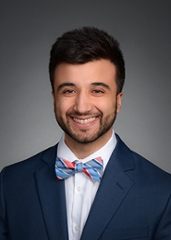
Saad Siddiqui, MD
Northwestern McGaw Family Medicine Residency at Humboldt Park
Nature Rx: Exploring nature as medicine in Humboldt Park to develop a sustainable patient centered outcome program at an FQHC
Saad Siddiqui, MD
PGY 3 Resident, Northwestern McGaw Family Medicine at Humboldt Park
Purpose/Background
The Humboldt Park neighborhood is a vibrant, predominantly Latinx and Black community whose members have disproportionately poor health outcomes across many measures. Many strategies exist to improve community health with varying degrees of evidence. The Northwestern McGaw Family Medicine Residency Program at Humboldt Park and the Chicago Park District will explore strategies to use nature as medicine centered in and around the 197-acre Humboldt Park itself to identify and meet the needs of community members. This partnership will 1) explore the therapeutic potential of, and evidence for, nature as medicine, 2) convene community-based organizations, park officials, service providers and patients to identify existing park-based programs, unmet needs and potential collaborators 3) produce a proposal to develop a specific patient centered outcomes research (PCOR) pilot 4) and develop a framework for lasting community-based research partnership between family medicine residents and patients at the Erie Humboldt Park Clinic.
Methods
The research design involves community building between the residency program and the Chicago Parks department, a preparatory phase involving needs assessment soliciting FQHC staff and patients to define community needs, and an intervention phase using ParksRx to provide nature prescriptions. The setting is at Erie Family Health Center- Humboldt Park, which is an FQHC and teaching health center which houses the McGaw Northwestern Family medicine residents. Participants include staff, residents and patients. The intervention will be provider training to give nature prescriptions to patients, and the initial measures evaluated will be the effect of the nature prescription on patient behavior using the ParksRx data collection platform.
Results
In progress
Conclusions
Too early to draw conclusions as the intervention phase is pending.

Eric Sullivan, MD
Northwestern McGaw Family Medicine Residency at Humboldt Park
Feedback on Feedback: Evaluating Satisfaction with Faculty Feedback of Residents
Background: Feedback is the cornerstone of medical education, yet inconsistencies in its application and delivery make it an active area of study and quality improvement. This study seeks to assess and improve resident satisfaction with faculty feedback in three Family Medicine residencies. Specifically, the study aims to determine current levels of resident satisfaction with the quality and/or quantity of faculty feedback, implement a new collection method to increase feedback opportunities, and assess improvement in satisfaction using a post-intervention survey.
Methods: Family medicine residents were surveyed on their satisfaction with faculty feedback, using both quantitative and qualitative assessments. All residents subsequently received a physical QR code linked to residents’ online assessment portal (New Innovations), where faculty members could provide in-the-moment feedback (using the ‘Anytime Evaluation’ form). Weekly reminder emails were sent over eight weeks to all faculty and residents, encouraging the use of the QR code system. The number and rate of QR code scans was tracked using an online portal. A post-intervention survey will be distributed after the intervention period to re-assess satisfaction with faculty feedback.
Results: While data collection is still underway, based on review of the literature I hypothesize that results of the pre-intervention survey will show a majority of residents with infrequent (50% or less of the time) and unsatisfying experiences with faculty feedback, regardless of the clinical location.

Roy Thomas, DO
Northwestern McGaw Family Medicine Residency at Delnor
Integrative Medicine Education within FM Residency at Northwestern
Roy Thomas, DO
PGY 3 Resident, Northwestern McGaw Family Medicine at Delnor Hospital
Background: Despite increasing popularity of integrative medicine modalities among patients, integrative medicine education in residency programs remains limited. In absence of a full integrative medicine (IM) curriculum, targeted resources may increase awareness of IM among both patients and providers. The purpose of this study is to explore whether residents among all three FM programs at Northwestern McGaw feel comfortable in recommending alternative therapies to patients, and to assess whether available materials highlighting aspects of integrative medicine for specific topics would encourage residents to make specific recommendations for patients.
Methods: A didactics session was developed to prepare residents for patient conversations about IM and to introduce patient education handouts on common IM topics (including diet, mental health, sleep health, smoking cessation, and dietary supplements). Learning objectives for the didactics session were as follows: 1) Identify situations in which IM resources may benefit patients. 2) Summarize and synthesize information from patient handouts to address questions about IM. 3) Apply information about IM in a simulated discussion with a patient. Handouts were made available in the precepting room of the family medicine clinic at Delnor. These handouts were also put into a published google document that was shared among residents of all three programs. Google analytics was used to track the number of times the document was viewed. Resident physicians from all 3 FM residency programs were recruited to participate in the study. Resident physicians were contacted by email with information about the project and a link to participate. Prior to the didactics session on 8/24/23, a 15-item REDCap questionnaire using a Likert scale was sent to residents across all 3 programs asking about exposure, education, interest, perceived perception of benefits among other questions. Residents received another REDCap survey 4 months post-intervention on 12/21/23, to reassess the likelihood of recommending alternative therapies to patients.
Results and Conclusions: Currently in progress. Outcomes of interest include 1) the utilization of patient handouts 2) resident satisfaction with patient handouts and 3) residents’ perceived likelihood of recommending alternative therapies to patients.

Catherine Tremblay, MD
Northwestern McGaw Family Medicine Residency at Delnor
The Utility of Audiovisual Media in Providing Nutrition and Culinary Education for Children Ages 9-14
Catherine Tremblay, MD
PGY 3 Resident, Northwestern McGaw Family Medicine at Delnor Hospital
Background: Despite serious health sequelae related to childhood obesity, many primary care providers cite time constraints during office visits as a limiting factor in their ability to deliver prevention and treatment interventions for childhood obesity. This study aims to assess the effectiveness of TikTok-style videos compared to informational handouts (current standard of care) as a way of improving competency and building healthy lifestyle habits in children ages 9-14.
Methods: Multi-site, randomized controlled trial with cross-over option from control to intervention group. Setting/intervention: Subjects were recruited from two Northwestern Medicine Regional Medical Group primary care locations including the Family Medicine Residency at Delnor and Pediatrics at St. Charles. After consent, subjects were randomized to either the control or intervention group and given two weeks to complete the assigned curriculum. Participants: Children ages 9-14 who are patients that belong to the two aforementioned primary care practices. Measures/main outcomes: Pre/post intervention surveys administered via protected survey driver REDCap assessing nutritional knowledge using multiple-choice questions, dietary habits including a 48-hour dietary recall, and opinions related to the interventions.
Results and Conclusions:
In progress

Oanh Truong, MD
Northwestern McGaw Family Medicine Residency at Humboldt Park
Facilitators and Barriers to Family Medicine Resident Engagement in Global Health: A Secondary Data Analysis of a CERA Study
Background: Interest in global health has been increasing over the years. Many family medicine residency programs have been incorporating abroad training opportunities for their residents. An analysis was done to identify facilitators and barriers to resident engagement in global health.
Methods: A secondary data analysis of a cross-sectional, national family medicine residency program director survey was conducted (CERA Survey PD-6). Data were obtained from the Council of Academic Family Medicine Educational Research Alliance (CAFM) data clearinghouse. The sampling frame for the survey was all ACGME accredited US family medicine residency program directors as identified by the Association of Family Medicine Residency Directors (AFMRD). This project was approved by the American Academy of Family Physicians Institutional Review Board.
Results: The overall response rate for the survey was 60.62% (274/452), and a total of n=257 (56.9%) answered questions related to global health. Seventy four percent of respondents indicated their program offered global health experiences. No significant differences were detected between university-affiliated and community-based programs in regards to the principle goal of the program in offering a global health experience. Both identified preparing physicians to practice underserved medicine and teaching community medicine or public health as primary goals. Resident engagement in global health activities was significantly correlated with faculty engagement in global health activities (r=.52, p<.01). The most common type of preparation residents received prior to going abroad was individual mentoring. Funding and time restraints were identified as primary barriers to implementing global health programs.
Conclusions: For family medicine residency programs, resident engagement in global health activities is correlated with faculty engagement in global health activities. Further work should examine whether this correlation leads to more ethical collaboration in global health practices as increasing numbers of residents engage in global health.
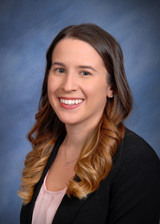
Carla Villarreal, MD
Northwestern McGaw Family Medicine Residency at Humboldt Park
Social Determinants of Health Training in Family Medicine: An analysis of a national survey of program directors
Social factors account for a majority of all health outcomes, underscoring the need to address social determinants of health (SDH) to eliminate health disparities. This study aimed to describe the scope of formal SDH curricula in family medicine residencies and to identify residency program characteristics associated with integrated core curriculum components to teach SDH. Survey items were included as one component of a larger, national survey of family medicine residency program directors conducted by the 2020 Council of Academic Family Medicine (CAFM) Educational Research Alliance (CERA). The sampling frame for the survey was all ACGME accredited US family medicine residency program directors as identified by the Association of Family Medicine Residency Directors (AFMRD). Overall, 41.2% of program directors reported significant formal SDH training in their residency program, though a majority (93.9%) agree screening for social needs should be a standard part of care. Most (58.9%) do not currently utilize standardized screening tools. The most commonly cited barriers to addressing SDH were lack of clinical resources (e.g social work, legal advocates, etc.), lack of community resources (e.g. food banks, SUD treatment, etc.), and inadequate SDH screening instruments or integration into the EMR. Availability of referral resources was associated with increased learner competency in addressing SDH. Additional research is needed to better train the next generation of physicians to identify and meaningfully address social needs. By surveying family medicine residency program directors, we present empirical explorations of factors associated with increased learner competency addressing SDH.

Kevin Volkema, DO
Northwestern McGaw Family Medicine Residency at Humboldt Park
From Chaos to Coordination: Strategies for Implementing and Residency Team-based Complexity Care Model
Background: Providing effective primary care to complex patients is a critical component of an effective healthcare system, yet teams struggle to effectively manage these patients. There are emerging innovative models of complexity care that incorporate social determinants into biopsychosocial models of healthcare. These innovative models are in the beginning stages of evaluating best practices. Our model prioritizes the service-oriented education and training of resident physicians within a complexity care model. The purpose of this study is to evaluate the team process and patient outcomes of a residency-based complexity care initiative.
Method: Our protocol includes bi-monthly multidisciplinary case conference reviews for our high-risk patients. These patients are identified by Medical Home Network’s algorithm and provider identified complex patients. These patients are reviewed by the team using a risk assessment framework that focuses on the patient’s barriers and assets. Data is collected on patient characteristics and interventions, team attendance, and team communication. The individualized care plans are regularly reviewed.
Results: Number of conferences, team members in attendance, patient characteristics, treatment plans, and team communication will be shared. Successful protocols, systemic obstacles and the evolution of our model will be discussed through a qualitative lens.
Discussion: Key stakeholders are engaged and committed to our case review process. Residents feel more prepared to treat complex patients. Case conferences are successfully used to generate treatment plans for the identified patients. Efficacy of these plans are still being evaluated. We have identified problems: duplicate documentation, lack of protected time, scheduling barriers, and inconsistent treatment plan implementation.

Whitney Vuong, DO
Northwestern McGaw Family Medicine Residency at Lake Forest
Implementation of an Osteopathic Manipulative Treatment Curriculum in an Allopathic Family Medicine Residency
Background: With the single graduate medical education accreditation system and the rising number of osteopathic physicians in the United States, there is a need to increase education dedicated to osteopathic philosophy, principles, and specific treatments.
Purpose: This curriculum, led by osteopathic resident physicians, aims to educate allopathic resident physicians on the osteopathic philosophy, anatomy, and introductory manipulation techniques through didactic lectures and hands-on workshops.
Methods: A 9-item pre-curriculum survey was developed to gauge familiarity and comfortability of osteopathic manipulative treatment among the family medicine allopathic and osteopathic residents. A three lecture and three workshop series was presented to the residents during the scheduled didactics time, where each session lasted about 45 minutes. After completion of the lectures/workshops, a post-curriculum survey was conducted and pre/post curriculum survey answers were compared using a Wilcoxon matched-pair sign rank test.
Results: A total of two osteopathic residents and eleven allopathic residents completed the pre-curriculum survey. At baseline, 42.6% of residents were either uncomfortable or very uncomfortable diagnosing musculoskeletal complaints using palpatory skills. Only 30.8% reported they were likely or extremely likely to use OMT for their patients. Pending completion of the curriculum, full results will be presented at research day.
Conclusion: Preliminary data suggest residents are interested in OMT learning opportunities, and the curriculum was well received. Full evaluation findings will be used to refine and improve curricular content in subsequent academic years.

Whitney Vuong, DO
Northwestern McGaw Family Medicine Residency at Lake Forest
An Evaluation of Provider Continuity In Relation to Diabetic A1c Control
Purpose: While there is copious research on the benefits of continuity of care on diabetic control, there is minimal data on the role of provider alignment in diabetic outcomes. This study aims to examine the impact of consistent provider alignment on glycemic control in Type II diabetic patients.
Methods: We conducted a multi-site, retrospective cohort study. Patient data was extracted from the thirteen FQHC sites that comprise Erie Family Health Centers, in Chicago, Evanston and Waukegan, Illinois. 4,478 patients met the following inclusion criteria: a) diagnosis of Type II diabetes mellitus (non-pregnant and without active substance misuse disorder) receiving care between 2008 and 2017. Our chart review assessed: a) hemoglobin A1C value at the time the diagnosis of DM was first used as the billing code for an office visit and 36 months after this index visit and b) provider alignment, defined as the number of different medical providers the patients saw for office visits related to diabetes during the 36 months after the DM diagnosis was first associated with an office visit. This study was reviewed by the Northwestern University Institutional Review Board (00210813).
Results: Analysis of covariance (ANCOVA) was conducted to determine whether patients’ most recent A1C values are related to provider alignment after controlling for baseline A1C values. The overall model was significant (F=531.9, p<.001, r2=0.33), however the fixed factor representing provider alignment was not a significant term (F=2099.79, p=0.821). Baseline A1C was a significant predictor (F=.306, p<.001, partial eta squared=.323), suggesting a stronger association with final A1C than provider alignment.
Conclusion: Our retrospective review of a cohort of type II DM patients receiving outpatient services at urban FQHCs demonstrated a descriptive relationship between provider continuity and glycemic control, however this association was not statistically significant. More research would be beneficial to refine our understanding of these variables, and to determine not only the impact of provider consistency on hemoglobin A1c but the overall impact on quality of life.

John Walton, MD
Northwestern McGaw Family Medicine Residency at Lake Forest
Hydroxychloroquine leading to a broken heart: Case Series
John Walton, MD PGY 3 Resident, Northwestern McGaw Family Medicine at Lake Forest
Background: Hydroxychloroquine (HCQ) has been used to treat many diseases including rheumatic diseases, malaria, and over recent years, as a possible antiviral in the setting of coronavirus disease 2019. Although this drug has shown clinical benefit in many diseases, long term use of this drug can have side effects not well studied. This case report is on Hydroxychloroquine and its side effects after long term use of the drug, specifically focused on Cardiomyopathy and development of heart failure in a patient with no prior history of cardiac disease. This case report focuses on the patients Hydroxychloroquine use, progression of symptoms, and diagnosis of Hydroxychloroquine induced cardiomyopathy and heart failure.
Case: A 67 year-old female with Systemic Lupus Erythematous and Rheumatoid Arthritis on long term HCQ presented with shortness of breath and dyspnea on exertion found to have severe cardiomyopathy with decreased ejection fraction of 29% with no significant vascular pathology. Decision-making: Given negative imaging and laboratory testing for the cause of this new onset heart failure and cardiomyopathy, endomyocardial biopsy was performed and sent out for electron microscopy and interpreted showing multiple thick sections of myelinoid bodies and ultrastructural features consistent with hydroxychloroquine cardiotoxicity.
Conclusion: Long-term administration of Hydroxychloroquine is correlated with cardiotoxic specific myocardial pathologic findings that are verified by endomyocardial biopsy. Earlier detection and diagnosis along with stopping of hydroxychloroquine may lead to better outcomes.
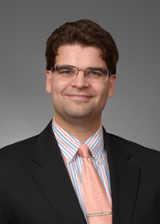
Stephen Whitfield, MD
Northwestern McGaw Family Medicine Residency at Humboldt Park
Does the use of IV blood pressure medications to treat inpatient hypertension reduce the incidence of MI, stroke, or death?
Background: IV blood pressure medications are commonly used in the inpatient setting. However, outside of a few specific indications, there are no guidelines for this practice. It is not known whether these medications improve outcomes for patients, or if so, at what threshold of hypertension they should be initiated.
Methods: A literature search was performed following the protocol of the FPIN HDA program. Included studies examined nonpregnant adults who were admitted to hospitals and who did not have conditions for which blood pressure control is clearly indicated in guidelines (such as heart attack, stroke, hypertensive emergency, or aortic dissection).
Results: There are no systematic reviews or RCTs supporting the use of IV blood pressure medications to treat hypertension without end-organ damage for adults in the inpatient setting. A 2020 retrospective review (n=22,834) found that when patients received IV blood pressure treatments during their admission, they had a higher 30-day incidence of AKI (10.3% vs 7.8%, p<0.001) and MI (1.2% vs 0.6%, p=0.003), with no change in blood pressure control, stroke incidence, or mortality during one year of follow-up. Higher blood pressures were more likely to be treated, but there was no threshold of starting hypertension at which treated patients fared better than untreated ones.
Conclusions: The use of IV antihypertensives to treat inpatient hypertension without end-organ damage appears to be associated with increased rates of MI and AKI without any impact on stroke or death.

Musa Williams, MD
Northwestern McGaw Family Medicine Residency at Humboldt Park
Resident Readiness to Address Intimate Partner Violence: Curriculum Development, Implementation, and Evaluation at a Family Medicine Residency
Musa Williams, MD
PGY 3 Resident, Northwestern McGaw Family Medicine at Humboldt Park
Background: Intimate partner violence (IPV) affects approximately 25% of women in the US and is associated with multiple poor health outcomes. The job of clinicians per The United States Preventative Health Task Force is to screen all reproductive age women for IPV and counsel or refer to support services those who are noted to be victims of IPV. Previous studies have shown consistently improved patient outcomes when clinicians were provided with DV/IPV training along with systemic support. Even with this data and strong need, there is currently no standardized DV/IPV component of medical training.
Methods: An intimate partner violence curriculum for family medicine residents was developed. It consisted of 1) a 2-hr didactic curriculum on intimate partner-violence, including local and hospital partner programs addressing interpersonal violence, using trauma-informed best practices and 2) intimate partner violence Observed Standardized Clinical Examinations (OSCEs) with standardized patients for residents to practice screening for and responding to reports of intimate partner violence. Residents at the Northwestern McGaw Family Medicine Residency at Humboldt Park participated in some part of this curriculum. Participants were asked to complete a survey, abbreviated from the validated PREMIS Survey, prior to the didactic, after the didactic and after the OSCE in order to assess its effectiveness. The cohort has completed at least two cycles of this. Longitudinal data will be accessed to determine if previous results were sustained two years out.
Results: In Progress

Evan Wittke, MD
Northwestern McGaw Family Medicine Residency at Humboldt Park
Same Day Antiretroviral Therapy Initiation in a Chicago Federally Qualified Health Center
Over the past few decades, HIV incidence in the Unites States has down trended. However, in recent years, reductions in new HIV cases have remained somewhat stagnant. Additionally, several parts of the country demonstrate disproportionately high HIV incidence including the southern United States having an estimated 52% of new HIV diagnoses in 2018. Similarly, HIV incidence rates that have historically affected non-Hispanic Black and Latinx patients are stably elevated; specifically Black and Latinx patients demonstrated rates of 42% and 27% of new diagnoses. Populations in these areas are key demographics to benefit from efforts to reduce HIV incidence. In keeping with the aims of the current U.S. Ending the HIV Epidemic: A Plan for America initiative, efforts must continue to address the disparities in HIV acquisition in the Unites States. To address these disparities, investigations have been conducted and demonstrated new antiretroviral therapy (ART) regimens involving rapid initiation and linkage to care have shown promise in the campaign to reduce HIV incidence.
This study proposes that the newer same day start ART initiation strategy will achieve viral suppression faster than convention methodology and that it will improve HIV retention in care. This retrospective chart review study will review data from January 1, 2015-January 1, 2021 comparing rates of HIV suppression and retention in care at Erie Family Health Centers.

J. Diego Yahuaca, MD
Northwestern McGaw Family Medicine Residency at Humboldt Park
Jump Start to GLP1-Agonists
J. Diego Yahuaca, MD PGY 3 Resident, Northwestern McGaw Family Medicine at Humboldt Park
Background: Dulaglutide is a GLP-1 agonist (GLP1a) that is covered by Medicaid and Medicare part D for Type 2 Diabetes Mellitus (DM2). Many patients at Erie have this insurance coverage and DM2 but are not on GLP1a. Patients who are started on Dulaglutide begin the medication at the lowest dose to minimize side effects, with monthly follow up for dose titration. Often, they are lost to follow up or their follow up is delayed and their dose is not appropriately titrated in a timely manner. The goal of this project is to identify patients with DM2 and coverage by Medicaid and Medicare part D, initiate them on Trulicity, and reinforce appropriate dose titration and regular follow up.
Methods: Family medicine residency training includes time for patient panel management. We will utilize this time to identify/recruit eligible patients, provide outreach reminders, and conduct supplementary telehealth visits in addition to their regular face-to-face visits for their DM2. The primary outcome is proportion of eligible patients initiated on Dulaglutide. This project is still underway and data collection is expected to be completed.
Results/Conclusions: In Progress

Erica Yeo, MD
Northwestern McGaw Family Medicine Residency at Delnor
The Relationship Between Doctor-Patient Compatibility and Patient Satisfaction
Erica Yeo, DO
PGY 3 Resident, Northwestern McGaw Family Medicine at Delnor Hospital
Background:
Patients who consistently see their physicians tend to have better management of their health. In one study, it was demonstrated that high degree of compatibility in interpersonal needs resulted in a more effective doctor-patient relationship in hospitalized psychiatric patients. Another study found that perceived physician empathy influenced newly-infected HIV patients’ satisfaction with their primary care provider. This study aims to examine the relationship between the interpersonal compatibility of resident physicians and their patients, and patient satisfaction.
Methods:
This was a retrospective study using self-administered online questionnaires from a convenience sample of residents and family medicine residency clinic patients. Questionnaires were distributed by email to resident physicians at two Northwestern McGaw family medicine residency locations, Delnor and Lake Forest, and to residency clinic patients over a 3-month period.
Conclusions:
Overall, results from this study were consistent with prior studies reporting factors influencing patient selection of their physician. Empathy and honest communication received the highest rankings. The factor that had the most correlation between resident physician and patient was decision making preferences while the least correlating was time. Majority of resident physicians noted running behind in clinic was bothersome while one resident was not bothered with running behind in clinic.
A major limitation to this study is the small sample size, making conclusions tentative. Future work can involve more residency clinic sites which are geographically diverse, different methods to increase participants in the recruitment process.

Laura Zhang, MD
Northwestern McGaw Family Medicine Residency at Lake Forest
Surveying Family Medicine Residency Applicants to Improve Virtual Interviewing
We attempted to evaluate the experiences of interviewees for Northwestern’s family medicine residency programs at both Lake Forest and Humboldt Park to investigate how our interview format (specifically our novel virtual platform amidst the Coronavirus pandemic) influences our applicants’ overall interview experience for the 2020-2021 application cycle. We achieved this by distributing via email an anonymous, multiple-choice survey to all applicants who had completed an interview at either of the aforementioned programs. Highlights of our results include that candidates greatly prefer interviewing with both the program director and with a current resident, while less so with the department chair. Furthermore, most respondents considered a total of four interviews built into the interview day as ideal. Although many respondents indicated that they experienced a reduced cost burden due to virtual interviewing, a slight majority indicated that they would prefer in-person interviews if given a choice. Finally, most candidates prefer Zoom as the video conference platform, compared to Microsoft Teams and “Other”. We realize we will likely need to adapt our survey questions in the future when we revert to in-person interviews; however, our results were nonetheless helpful in guiding us to adapt our interviewing process to improve the overall experience for interview candidates for future application cycles.

Ellean Zhang, DO
Northwestern McGaw Family Medicine Residency at Delnor
The Utility of Audiovisual Media in Providing Nutrition and Culinary Education for Children Ages 9-14
Ellean Zhang, DO
PGY3 Resident, McGaw Family Medicine Residency at Delnor
Purpose:
Despite serious health sequelae related to childhood obesity, many primary care providers cite time constraints during office visits as a limiting factor in their ability to deliver prevention and treatment interventions for childhood obesity. This study aims to assess the effectiveness of TikTok-style videos compared to informational handouts (current standard of care) as a way of improving competency and building healthy lifestyle habits in children ages 9-14.
Methods:
Study design: Multi-site, randomized controlled trial with cross-over option from control to intervention group. Setting/intervention: Subjects were recruited from two Northwestern Medicine Regional Medical Group primary care locations including the Family Medicine Residency at Delnor and Pediatrics at St. Charles. After consent, subjects were randomized to either the control or intervention group and given two weeks to complete the assigned curriculum. Participants: Children ages 9-14 who are patients that belong to the two aforementioned primary care practices. Measures/main outcomes: Pre/post intervention surveys administered via protected survey driver REDCap assessing nutritional knowledge using multiple-choice questions, dietary habits including a 48-hour dietary recall, and opinions related to the interventions.
The Davee Lectureship Series initiated in 2017 following a generous endowed gift from the Davee Foundation. The lectureship funding allows us to bring renowned family physicians to our campus to increase awareness of the national and international developments in our specialty and to engage students, residents, and faculty in discussions of interest to our discipline and the health of our nation. In 2018, we hosted the Davee Lecture in conjunction with our inaugural Resident Research.
Forum to acknowledge and inspire the scholarly work conducted by our graduating resident physicians. This tradition continues each year, and we are excited to celebrate the accomplishments of all three of our residency programs moving forward. We are enormously grateful for the Foundation’s generosity, which enables us to grow and strengthen the Family & Community Medicine Research Enterprise.
The Davee Foundation
Since the 1990s, The Davee Foundation has given more than $54 million to support Feinberg and ensured through its philanthropy that the medical school sets a high bar for excellence and innovation, especially in the areas of neurology and Alzheimer’s disease. The foundation's giving has funded groundbreaking research, one-of-a-kind fellowship programs to train the next generation of physician-scientists and five endowed professorships to ensure our leadership continues far into the future.
The Davee Foundation Family Medicine Lecture gives the Department of Family and Community Medicine the ability to attract nationally recognized family physicians to our campus. It provides Northwestern students, residents, and faculty with meaningful interactions with these noteworthy “movers and shakers” in the field who shine a spotlight on topics of interest to our discipline and the health of our nation.
The Davee Foundation was established in 1964 by Ken M. Davee, an alumnus of Northwestern University, and his wife, Adeline Berry Davee. After Adeline’s death, Mr. Davee continued management of the Foundation with his second wife, Ruth Dunbar Davee, also an alumna of Northwestern. Ruth would go on to serve as president of the Foundation after Ken’s death. Through their philanthropy, the Davees challenged organizations to be innovative and to set a very high bar for excellence.